The exhibition Bukit Brown: Our Roots, Our Future, co-organised by All Things Bukit Brown and the Chui Huay Lim Club was held between 29th June and 7th July 2013. With over 60 panels, it marked the biggest exhibition of its kind on Bukit Brown.
It was officially launched by Jane Ittogi Shanmugaratnam who gave the opening speech before touring the exhibition, which featured collections from descendants as well from private collections.
More photos of the exhibition here.

Jane Ittogi Shanmugaratnam being escorted by Chew Kheng Chuan and other members of the organising committee (photo Gan Su-Lin)
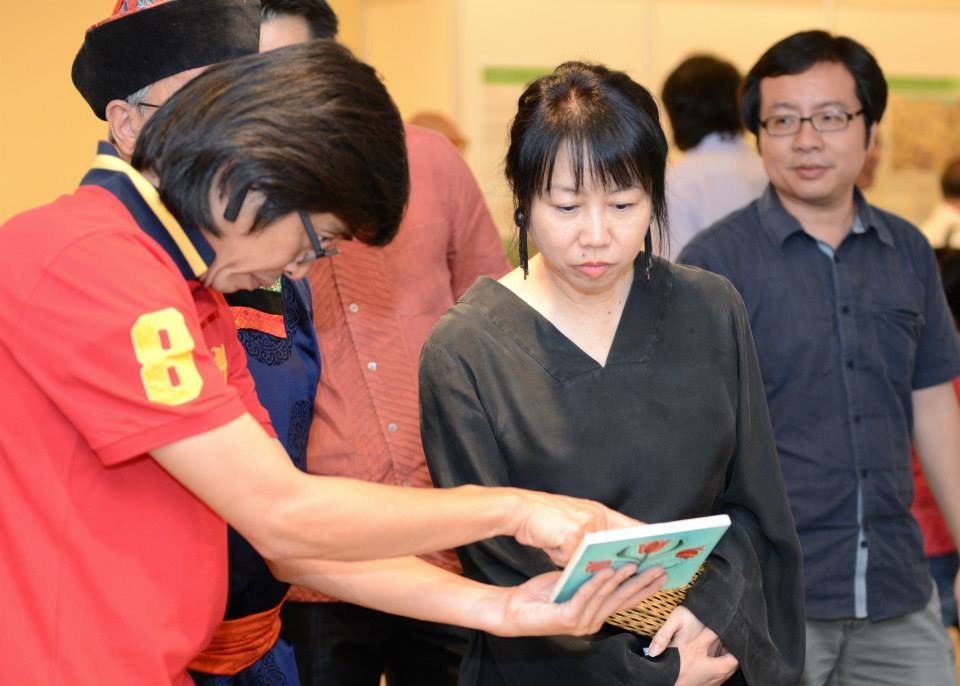
Victor Lim explaining the origins of Peranakan Tiles to the GOH as Ang Yik Han, who conceptualised the themes of the exhibition looks on (photo Gan Su-Lin)
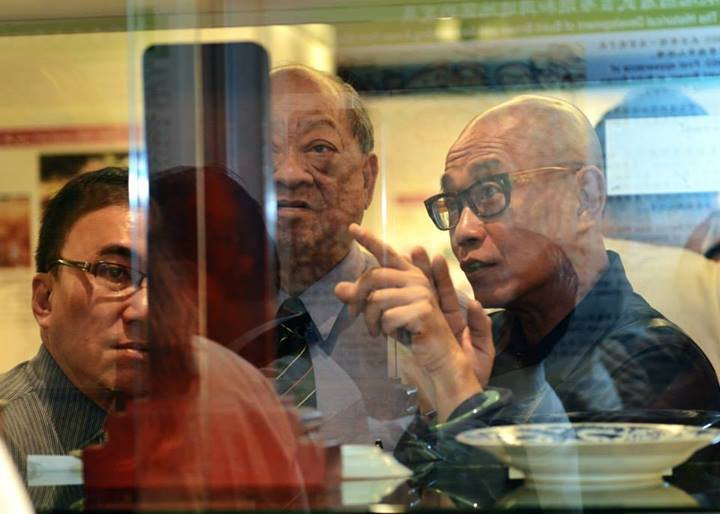
Chen Kezhen, artist and collector explains the intricacies of the inscriptions on Cheang Hong Lim’s ancestral tablet to Prof Phua of Chui Huay Lim (photo Gan Su-Lin)
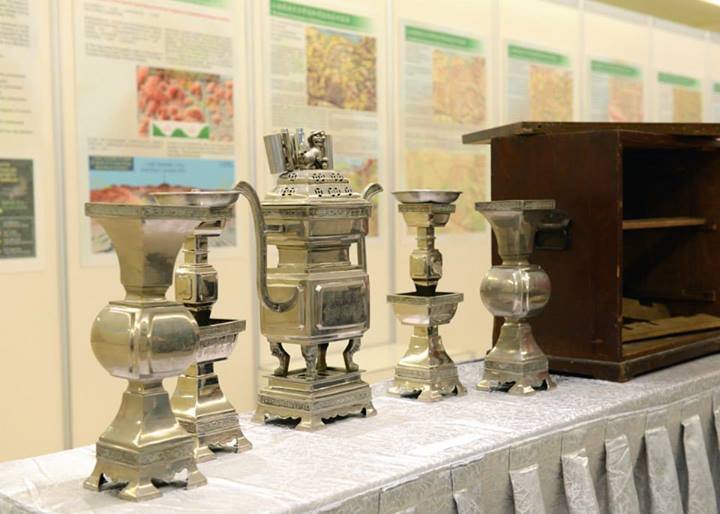
A set of ritual vessels previously used by a Teochew clan association when paying respects to their ancestors during Qing Ming and other occasions. The set of five consists of a censer, a pair of candlestick holders, and a pair of vases. (photo Gan Su-Lin)
Special thanks to our official photographers on opening night, Gan Su-Lin and Bianca Polak
About the Exhibition:
Our Roots, Our Future has 4 themes:
A) History – Bukit Brown’s place in the history of the evolvement of Chinese cemeteries in Singapore, its administration and topography.
B) Our Pioneers – their contributions to social and community services, education, commerce and banking; the role members of the Singapore chapter of Tong Meng Hui (China Revolution Alliance) and Republican Party played in the 1911 Revolution which changed the course of China’s history.
C) Tomb Culture – understanding tomb design, carvings and statuary in relation to feng shui principles and beliefs; the development of features unique to South East Asia such as Peranakan tiles and Sikh guards; inscriptions with different calendar systems, ranks , and insignia reflecting a century of political change of China and colonial powers.
D) The Living Cemetery – speaks to the potential of Bukit Brown for UNESCO World Heritage listing by showcasing the popular weekend heritage and nature tours conducted by volunteer guides, flora and fauna, student projects, refurbished tombs, Qing Ming and the community of tomb keepers.
Exhibition artifacts include a 3 D model of Bukit Brown, implements used in feng shui and a display of Peranakan tiles.
Complementing the exhibition was a series of talks which include presentations on cemetery research in Malaysia and Singapore culminating in a panel discussion, nature in Bukit Brown, personal accounts by descendants on rediscovering their roots and Qing Ming practices.
There was also a screening and talk by the producer of “Light on Lotus Hill” – an award winning documentary set against the backdrop of the Sino Japanese war about the Buddhist Abbot Venerable Pu Liang and the part he played in supporting the China Relief Fund and the recruitment of Nanyang volunteers who served on the Burma Road.
About the Organisers:
Chui Huay Lim Club established since 1845, has a rich history of 167 years. It was originally setup for Teochew businessmen to engage in business networking and recreational activities.
All Things Bukit Brown is the banner for a group of dedicated volunteers who conduct weekly public tours and independent research on the history, habitat and heritage of Bukit Brown Cemetery. They share their on-going learning journey in “Our Roots, Our Future”
The Wayang in the Tombs (2)
by Ang Yik Han
The Wayang in the Tombs 1 continues, as Yik Han unravels more iconic scenes from the Romance of the Three Kingdoms and other popular stories.
“Temple of Sweet Dew” (Gan Lu Si – 甘露寺)
Zhou Yu, Sun Quan’s viceroy, wanted to lure Liu Bei over to the kingdom of Wu and then incarcerate him, on the pretext of marrying Sun Quan’s younger sister to him. Liu Bei’s advisor, Zhuge Liang, saw through this and ordered Zhao Yun, one of Liu Bei’s generals, to accompany him for protection. At the same time, he sent word to Sun Quan’s father-in-law to get Sun Quan’s mother along so that she can view her prospective son-in-law at the Temple of Sweet Dew. With the old lady around, Zhou Yu’s mischief came to naught and Liu Bei and his lady successfully got hitched.
Bowing man on left is Liu Bei, seated lady in the centre is Sun Quan’s mother, man on the right is probably Sun Quan’s father-in-law.
Editors note: An insight on how Yik Han deciphered this panel.
“The costumes especially the head dress are clues. If you look at what the man on the left is wearing, you can tell he is not just another official. For some tine I thought the figure in the middle is a male till I looked more closely at her headdress which is what you will expect a more senior lady of high social status to wear. Put these two together and you have a high ranking older male, probably some lord, paying respects to an old woman also of high social status. All the other identified panels from this tomb are based on the Three Kingdoms, and there is one famous part of the novel which has this setting, so that’s how I identified the scene. If you area Chinese opera fan, you may also recognise it easily.”
Here’s an animated excerpt from the opera
Lui Bei’s Farewell to Xu Shu
Compared to his warlord contemporaries, Liu Bei was handicapped by the lack of an able advisor. Fortunately for him, a brilliant strategist named Xu Shu joined him and helped him achieve some small victories. Just when things seemed to be going well for Liu Bei, his rival Cao Cao found out about this and he managed to get someone to send a forged letter to Xu Shu, purportedly from Xu Shu’s mother. The letter claimed she was in Cao Cao’s custody and her life was in danger unless Xu Shu abandon Liu Bei and join Cao Cao’s camp. The filial Xu Shu had no choice but to obey and the inevitable farewell came. On the day Xu Shu left, Liu Bei saw him off with his retainers and followed behind him for part of his journey. Upon reaching a forest, Liu Bei exclaimed “I want this forest to be cut down!” When his retainers asked him why, Liu Bei replied that this was because the trees blocked his view of the departing Xu Shu.
Here’s an opera you can view on the sending off.
The panels are from the tombs of the Teo Family located in Hill 2
The Third Madam teaches her son (三娘教子)
During the Ming Dynasty, there was a businessman by the name of Xue Guang who had a wife Mdm Zhang and two concubines, Mdm Liu (who bore him his only son Xue Yi) and Mdm Wang. Xue Guang conducted his business far from home. One day, he asked a man from his hometown to deliver five hundred taels of silver to his family. Instead of doing so, the man took the silver for himself and told the Xue family that Xue Guang had died. As they believed the report to be true and there were no news from Xue Guang, Mdm Zhang and Mdm Liu remarried after some time due to the family’s slide into poverty.
Only Mdm Wang chose to remain and take care of Xue Yi even though he was not her flesh and blood, together with an old servant Xue Bao. She weaved cloth to support Xue Yi through school. Xue Yi was however mocked by other children in school as the boy without a mother. Losing his temper, he took it out on Mdm Wang when he got home, saying that she had no right to punish him as she was not his mother. In fury, she slashed the cloth on her loom into two, signifying the serverance of their relationship, shocking Xue Yi and Xue Bao who hurriedly interceded on his young master’s behalf. Xue Yi came to his senses and promised to apply himself to his studies diligently, and even offered the cane to Mdm Wang to punish himself. In years to come, Xue Yi gained honours in the imperial examinations.
A movie based on the opera can be found here
Dateline: Sunday 17th March, 2013 – 2pm-4pm
Project: A Community Service by Pack 3017 of the Cub Scouts of America (age 7-11 years) to “spring clean” the tombs on Hill 1, supported by the Brownies.
The project began with showers of blessings, that came and went. Undaunted, about 30 cub scouts accompanied by their parents cleaned up some 40 tombs on Hill 1.
Their timing was perfect, 2 weeks before the annual Qing Ming festival when descendants spruce up tombs to honour the memory and contributions of their ancestors.
Thank you Cub Scouts of America for honouring the pioneers of Singapore at rest in Bukit Brown A meaningful job well done.
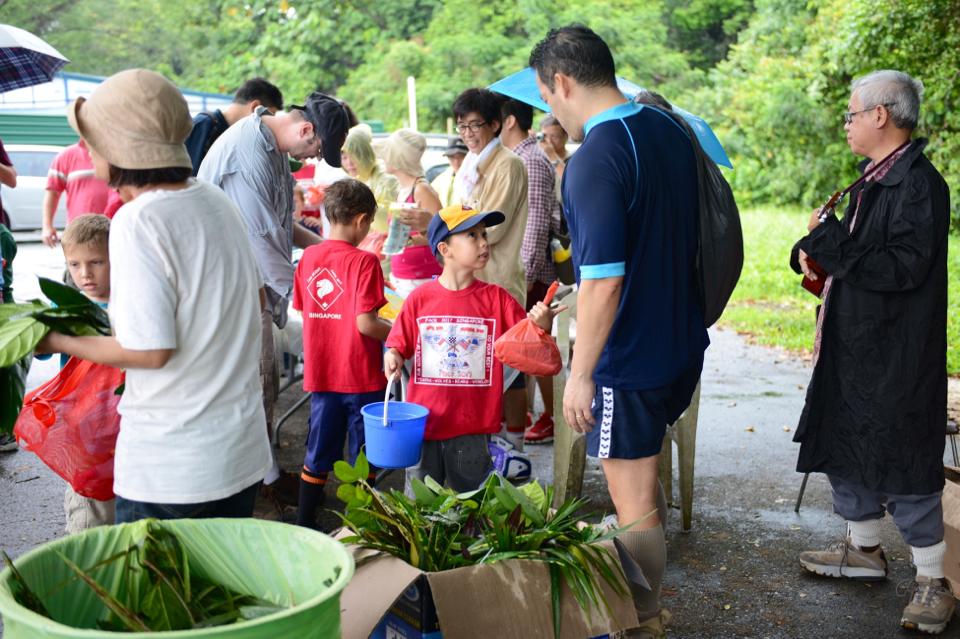
Collecting their cleaning kits which included “green” brooms from the branches of a fallen tree at BB (photo Gan Su-Lin)
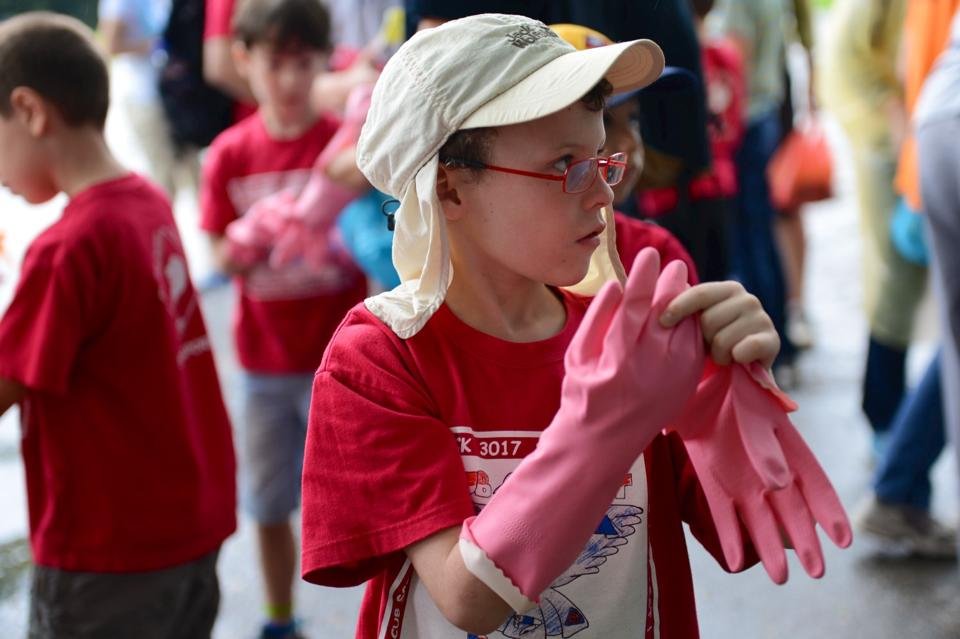
Gloves on! We are handling diluted chemicals needed for a good scrub without eroding stone or inscriptions (photo Gan Su-Lin)
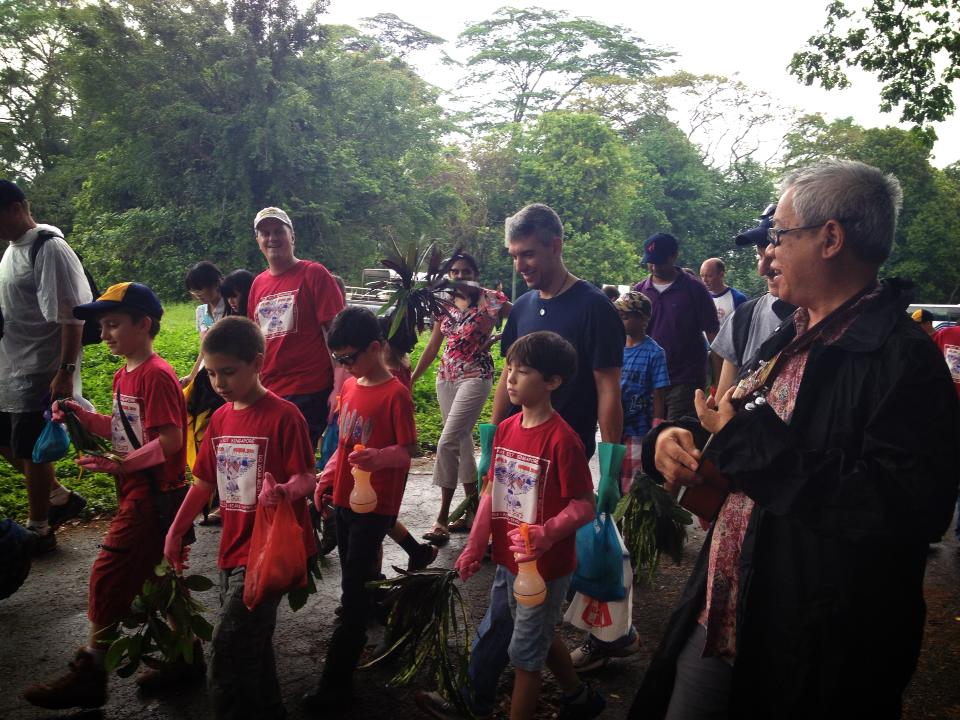
Eternal scout, Lim Su Lin -the wandering minstrel of Bukit Brown, sending off the cubs (photo Raymond Goh)
Finally, the cleaning begins with much vigour and diligence!

Replenishing water needed to wash down the tombs. An estimated 10 tubs of water had to be transported from main taps at the entrance. (photo Gan Su Lin)
And indeed, the whole pack did a brilliant job in the final reveal
When this photo was posted on the Bukit Brown Facebook Group, Madelene Seow said “Please send my appreciation & thanks to the cub scouts.” She is the great great granddaughter of Siow Cheng Watt.
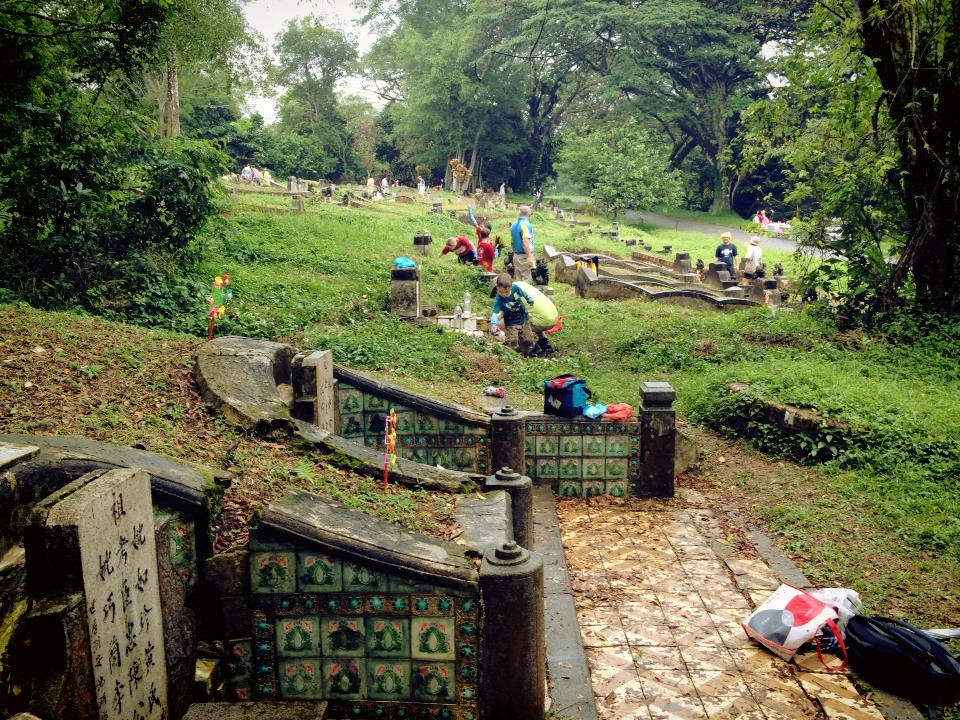
The beautiful tiles of Tan Joo Khoon’s tomb brought to light by the cub scouts. He was the chief clerk at the Master Attendant’s office and acted also as a Chinese interpreter. (photo Raymond Goh)
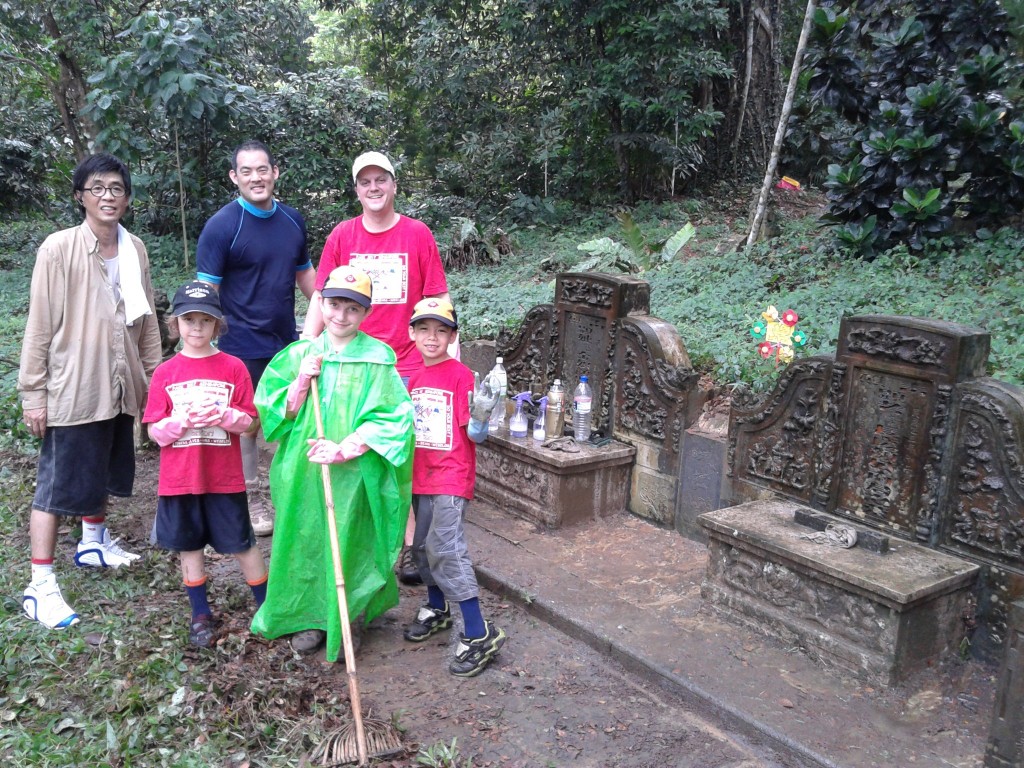
Victor Lim on the left with some of cub scouts. Victor planned the logistics and prepared materials for this project ( photo Ai Loon)
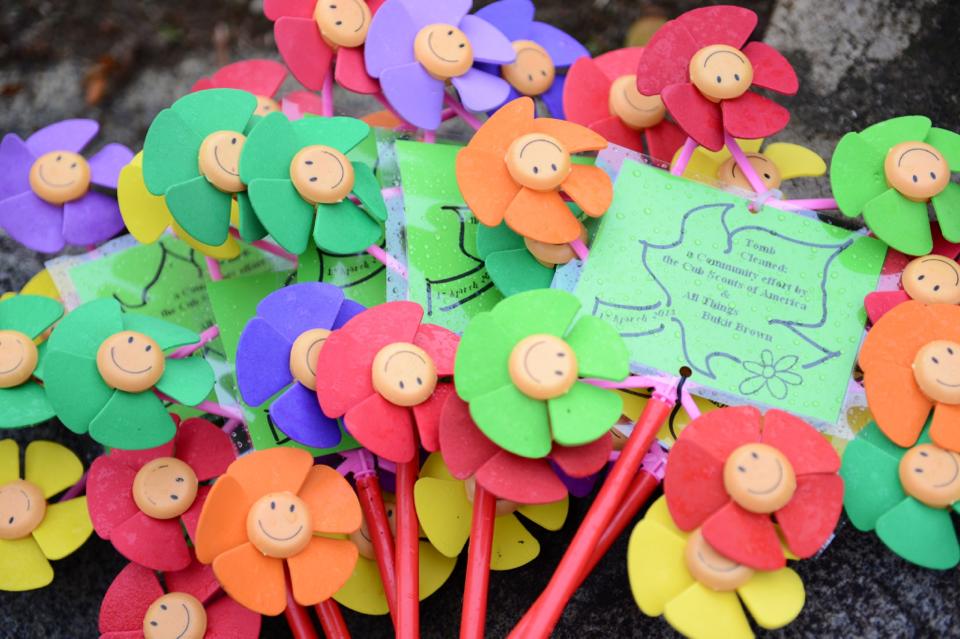
The smiles say “Tombs Cleaned – A Community effort by the Cub Scouts of America & All Things Bukit Brown” (photo Gan Su-Lin)
From left to right: Peter , Yik Han, Danny ,Hang Chong, Zen , , Anna ,Ai Loon, Catherine, Ee Hoon and last but not least Victor Lim who organised logistics and materials needed. Not in photo Sugen and Su-Lin (who was behind the camera).
Here are 4 videos by Khoo Ee Hoon on cubs with parents ar work.
The preparations behind the scene:
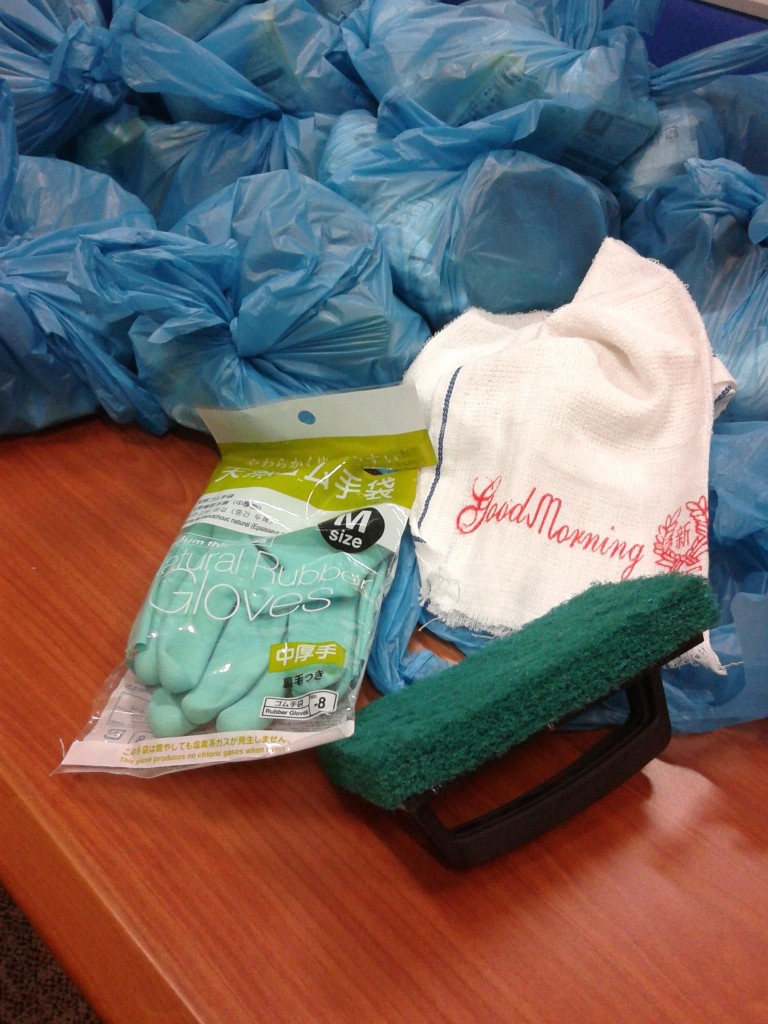
45 cleaning kits, containing gloves, brush and good morning towel. Water Spray bottle and green brooms prepared separately ( photo Ai Loon)
A group of 0ver 60 turned up for the “themed” tour which focused on intricately craved tomb panels and their symbolic meanings. The lead guide Yik Han also gave an introduction to “Tomb Cons” – how tomb contractors go about building the tombs based on the requirements of their “clients”
Some comments from participants on the tour:
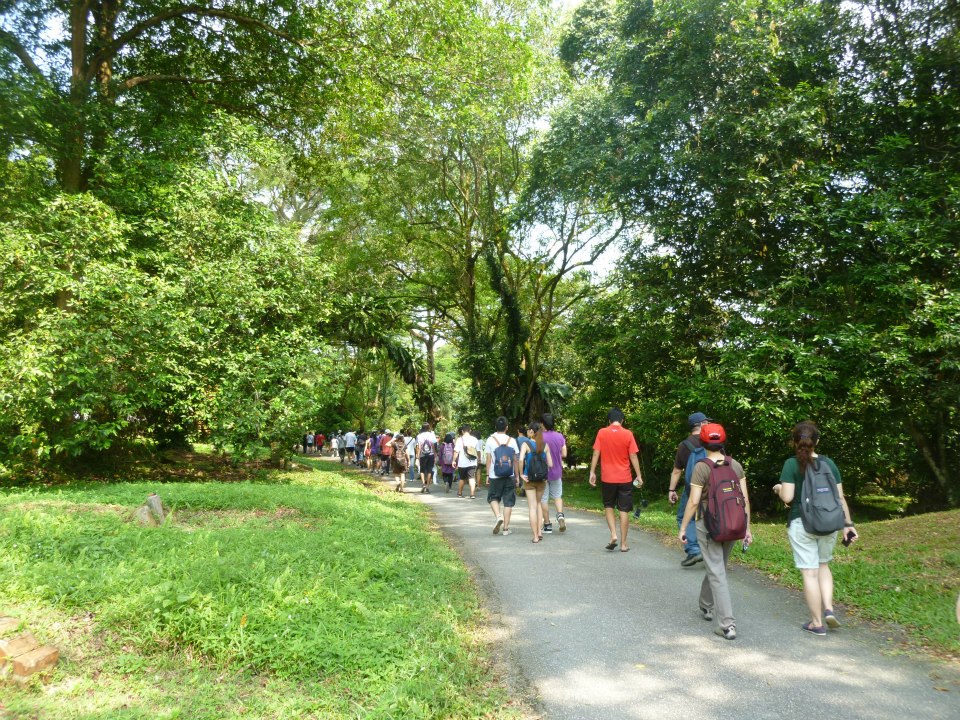
Enjoying nature as the group make their way to the largest tomb in Bukit Brown (photo Cheng Pei Yun)
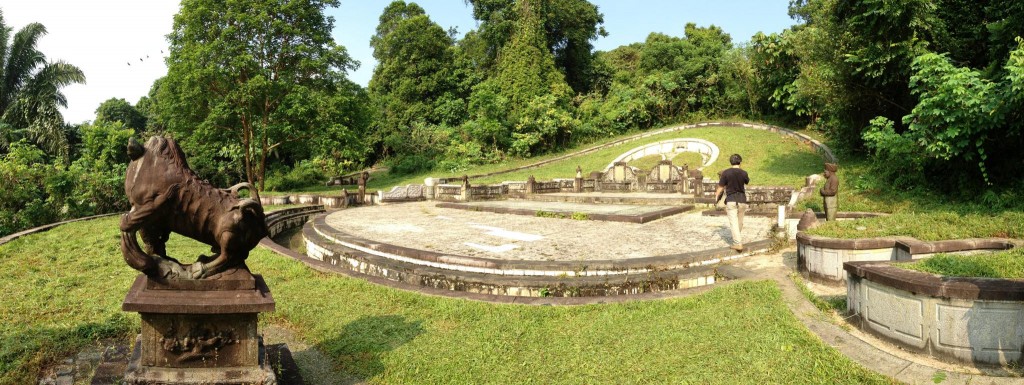
Lead Guide, Yik Han showing the way to the first glimpse of Ong Sam Leong’s spectacular tomb visible from google earth
( photo Kelly Cheng)
For more on the tour, read Cheng Pei Yun’s report
The physical work on the ground that would help take you to the tombs featured on the new iBBC app started today.
A team of volunteers including Brownie Khoo Ee Hoon had prepared sign-ages to be secured at various vantage points. The signs are colour coded to the map so you can traverse the sprawling hills of Bukit Brown, independently.
Ee Hoon who helmed the artwork for this project, outlined a list of things which had to be done
The steps:
1) Design+Buying material (metal pole, cement, boards, laminating film, nuts and bolts)
2) Production of poles and signages which involve
a) cutting pole to length required
b) making cemented base + planting metal pole into cement base and dry
c) Painting the metal pole.
d) Cutting boards for signages and drilling holes for nuts and bolts.
3) The calculation of distant (footnote)
4) The final adjustment to design + print + laminate
5) Stick laminated signages to board,
5) Arrange signages in right sequences
6) Screw board to metal poles
7) Plant the finished poles and signages.
footnote trivia : the distances on the sign board to the tomb, shown in metres were calculated by footsteps. On average. one footstep is equivalent to one metre. So walking 150 metres to a tomb is approximately 150 steps depending on how long is your stride 😉
The Wayang in the Tombs
by Ang Yik Han
(Popular tales performed in Chinese Wayang carved in iconic scenes on tomb panels.)
In the ” Romance of the Three Kingdoms” General Guan Yu is immortalised as the epitome of loyalty and righteousness. He played a significant role in the establishment of the state of Shu Han during the period of the Three Kingdoms.
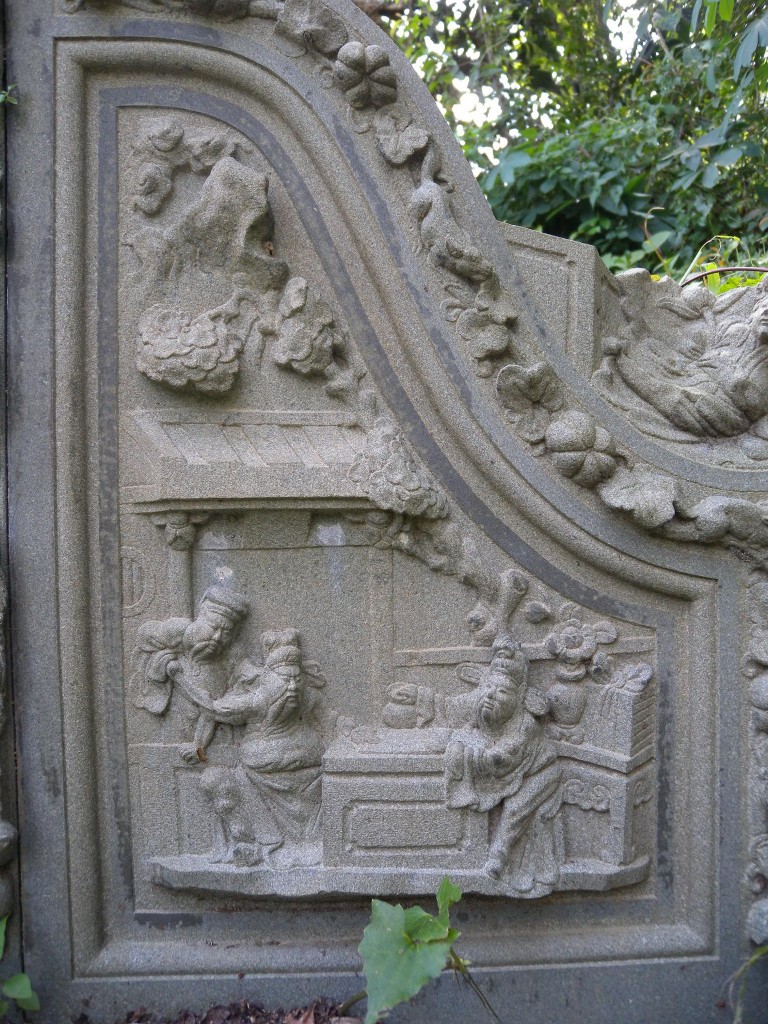
Guan Yu took a poisoned arrow in his right arm when he was besieging the city of Fanzheng. Determined not to retreat, he called upon the services of the famed physician Hua Tuo to treat him on the battlefield. Hua Tuo saw that the poison had spread to Guan Yu’s bones and he had to operate on his arm and cleanse the poison by scrapping his bones. Undeterred, Guan Yu subjected himself to the ordeal, all the while sipping his wine and playing a game of chess. ( photo by Yik Han)
Legend? Embroidered truth? It does not matter, over the ages from at least the Ming Dynasty, the image of Guan Yu smiling and sipping his wine while Hua Tuo scrapped his arm bone has been a source of wonder and encouragement for many.
This tomb is located in Hill 2 and belongs to the Teo Family.
More tombs featuring Guan Yu, here
From Madam White Snake :
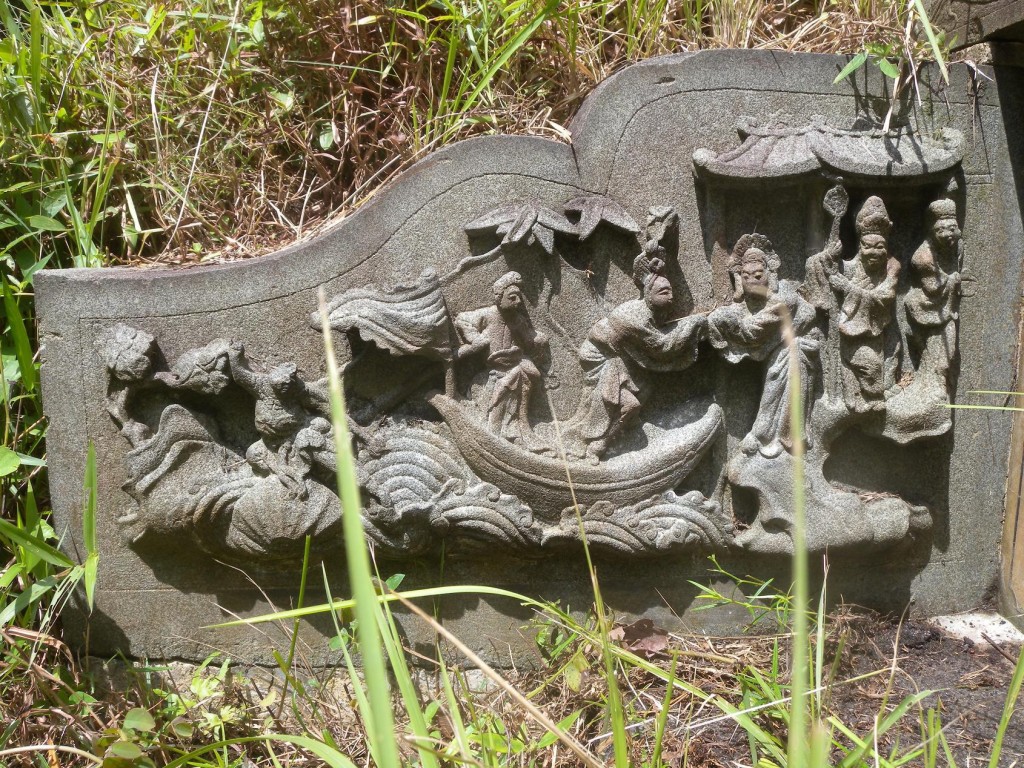
A panel possibly of the White Snake parting with her husband after he was taken in by the words of the monk Fa Hai. (photo Yik Han)

The White Snake and her companion the Green Snake (the two ladies in the boat) leading the creatures of the sea in an attempt to flood Jinshan Temple and rescue her husband Xu Xian (许宣) from the clutches of the monk Fa Hai (法海). (photo by Yik Han)
From Nezha conquers the Dragon King :
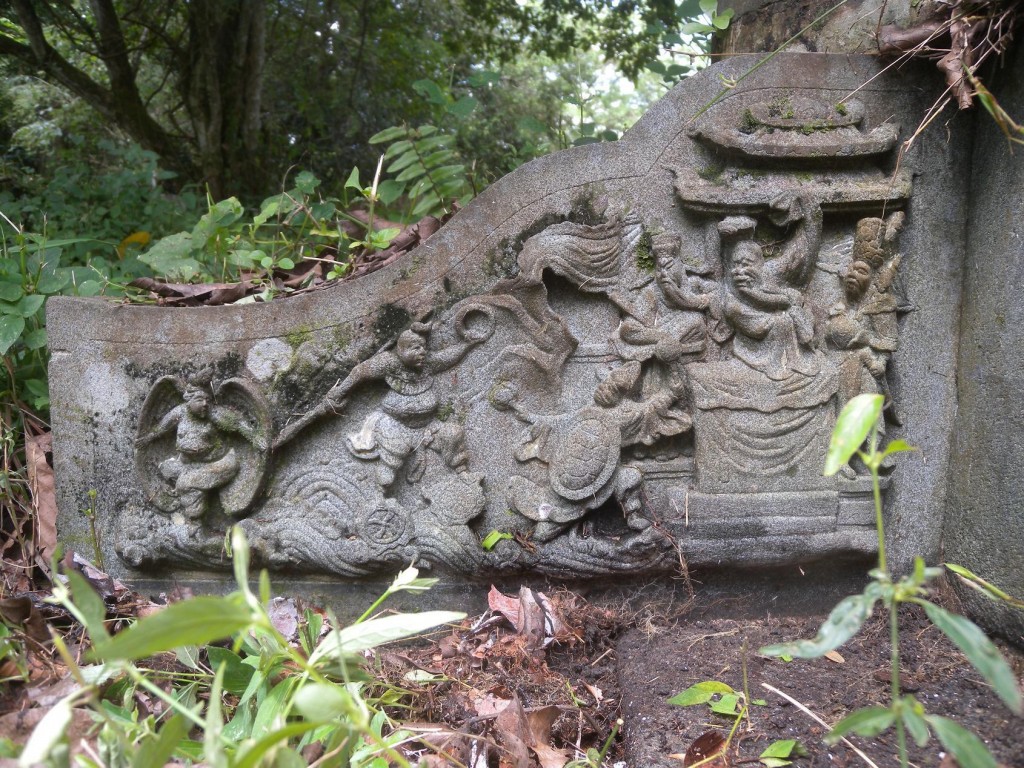
Nezha storming the palace of the Dragon King with his signature Qiankun ring in one hand, his spear in the other and riding on his “fire wind wheels”. The Dragon King flanked by his courtiers are seated on his throne on the right, a bumbling turtle is trying to resist Nezha, and on the left is a shellfish nymph. (photo Yik Han)
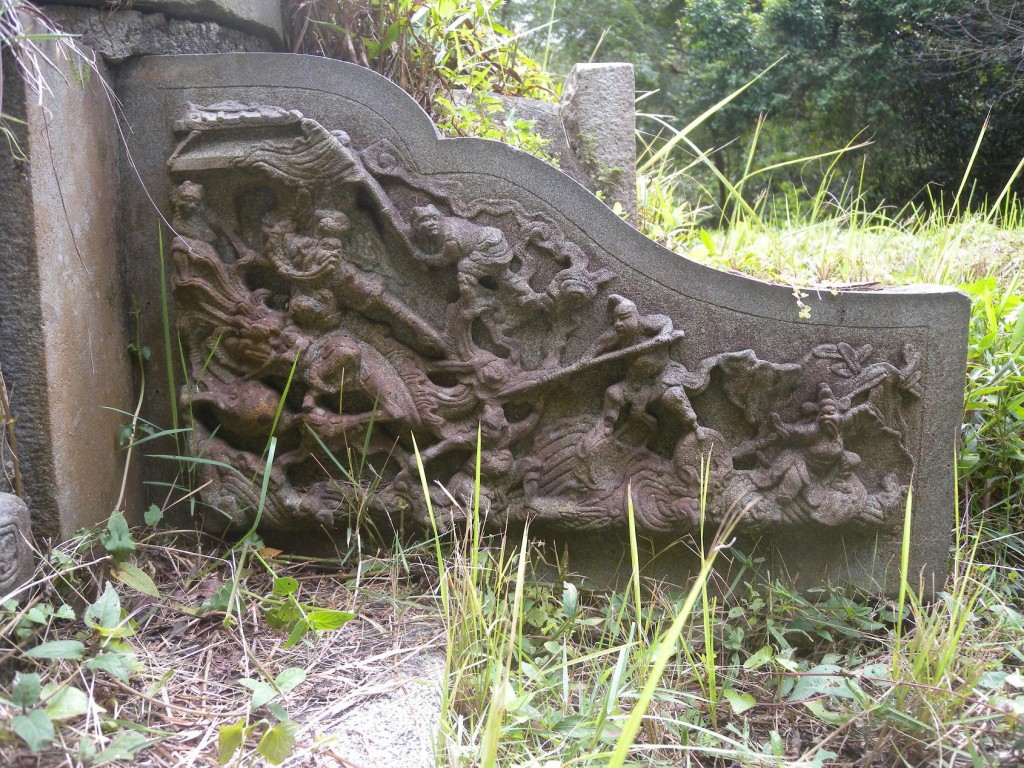
Nezha storming the Dragon King’s domain as the Dragon King riding on a magnificent dragon beats a hasty retreat covered by his underlings. The armed figure on the right may be Nezha’s father Li Jing (李靖), furious with the havoc created by his son (Photo Yik Han)
The panels can be seen at the tombs of Poh Cheng Tee and his wife, and mother, in Hill 1, stake numbers 1017 – 1019. Exhumation of staked tombs in the way of the 8 lane highway is expected to begin after April 15th
Four Appointments (四聘)
by Ang Yik Han
Yet another set of four popular stories from Chinese history, this time found at the double tomb of Chew Joo Chiat and his wife, the subjects of the “Four Appointments” are two great rulers and two renowned officials who assisted their masters ably in establishing their kingdoms.
1 Yao Appoints Shun (尧聘舜)
Yao (尧), a great ruler of the Xia Dynasty (夏朝) the origins of which have been lost in time, was troubled. His son was not fit to assume the mantle of leadership and the whole land knows it. He had no choice but to hand over to someone from outside the family but a suitable candidate had to be sought. Word came to his ear of a filial young man, Shun (舜), a commoner who had lost his mother at a young age. His father’s already bad temper became worse after this and after he remarried, his affection turned from him to his new son. Shun’s stepmother and his stepbrother also treated him badly. Despite this, he was steadfast in his obedience to his parents. His filial piety was such that one day, the celestial courts sent an elephant to help him till the soil and birds to weed his fields. Yao judged that Shun was the best candidate for the position after he met him and even married his two daughters to him. Shun did not fail to disappoint and became another great ruler. The motif of the elephant in Chinese art has since been associated with peace and prosperity in the land on this account.
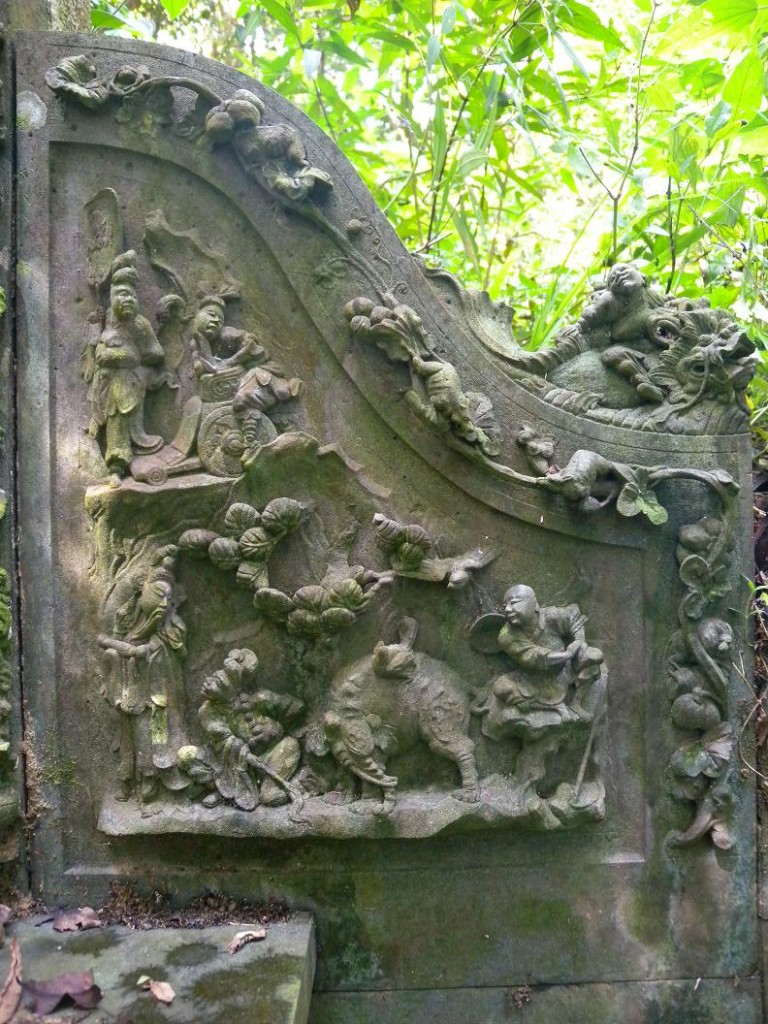
Shun sits by his fields as the elephant and what looks like a well-fed bird helps him out with his farming. Yao approaches from the left. (photo Yik Han)
2 Shun Appoints Yu (舜聘禹)
During Shun’s (舜) reign, floods were a constant scourge for the people. He appointed Gun, father of Yu (禹) to tackle this problem. Gun’s efforts were ultimately unsuccessful and Yu was appointed in his place. Unlike his father who tried to stem the flood waters with dams and embankments and failed, Yu created tributaries to disperse the waters. He was so dedicated to his work that he was supposed to have traveled around the land continuously for ten years. Even though he passed by his house 3 times, he did not stop to visit his family and missed his child’s birth and growing years. When he eventually succeeded in taming the waters, his knowledge of the lay of the land was unsurpassed. Coupled with his well-known concern for the people’s welfare, none was thought more eligible to take over as Shun as ruler. Till today, he is known as the “Great Yu” (大禹) in remembrance of his deeds.
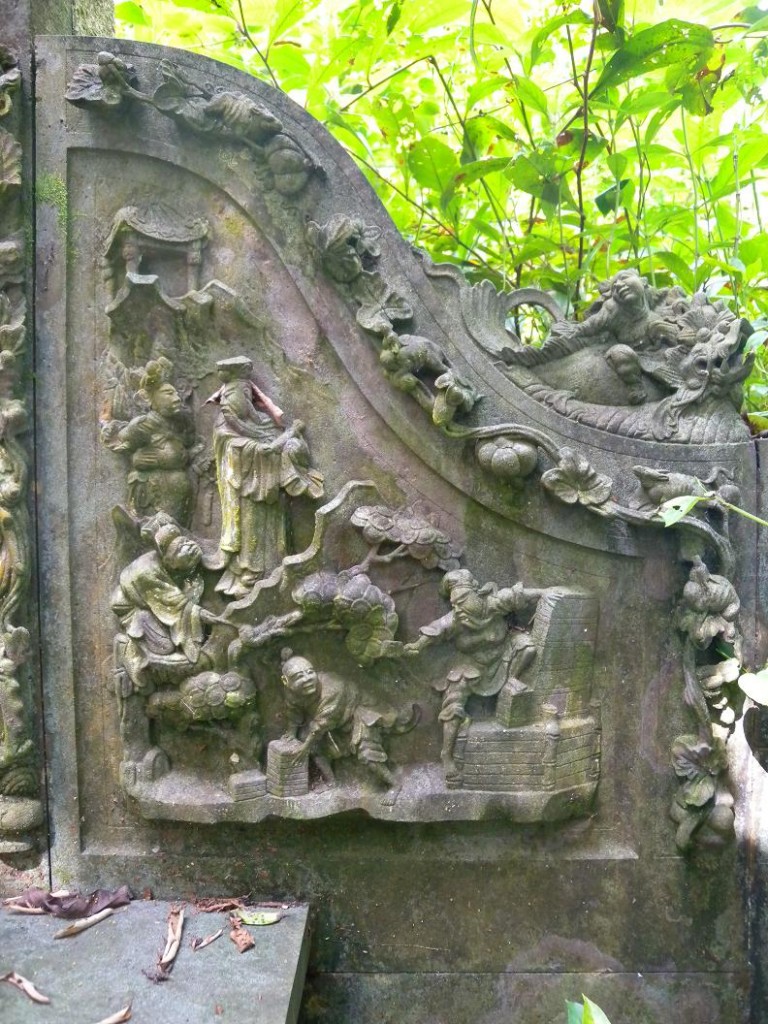
Yu building a brick wall in preparation to channel the flood waters as Shun arrives on the scene. (photo Yik Han)
3 Shang (Cheng) Tang Appoints Yi Yin (商汤聘伊尹)
The last ruler of the Xia Dynasty (夏朝) was a tyrant notorious for his wanton cruelty and excesses. He paid no heed to governmental matters, which was to be his undoing. One of his vassals, Cheng Tang (成汤) saw the opportunity to advance himself, quietly built up his strength and bringing men of talent into his fold. Hearing about Yi Yin (伊尹), he visited and met him with his buffalo. Yi Yin rebuffed his invitation however, stating that he had no wish to become an official and that he had no abilities to speak of. Cheng Tang had no choice but to leave. Soon after, however, Yi Yin was brought to his attention again, such was his reputation. It was only on Cheng Tang’s third visit that he succeed in convincing Yi Yin to cast his lot with him. With his help, Cheng Tang overthrew the Xia and became the first king of the Shang Dynasty (商朝). As for Yi Yin, he is remembered as a great politician, strategist, philosopher as well as a good cook; he was adopted as one of the patron deities of cooks in China.

Yi Yin pulling his buffalo behind him as Cheng Tang respectfully makes clear his intention in meeting him. (photo Yik Han)
4 King Wen Appoints Tai Gong (文王聘太公)
During the Shang Dynasty (商朝), the Duke of the West, Ji Chang (姬昌), traveled around his realm to seek men of talent who could help him administer his domain. One day, on the banks of the River Wei, he saw an old man who was fishing with no bait, using only a bare fish hook which was straight instead of curved. When asked why he did this, the old man replied that those who were willing would be hooked voluntarily. Realising he had met an exceptional person, the Duke invited the old man into his carriage and personally pulled him along for eight hundred steps. The old man, Jiang Ziya (姜子牙), was to become the Duke’s trusted advisor and his kingdom’s chancellor, helping his son overthrow the tyrannical rule of the Shang Dynasty and establish the Zhou Dynasty (周朝). Ji Chang was given the posthumous title of King Wen (文王) after his son’s success and his able advisor was appointed as the Grand Duke (太公). This story forms part of the “Investiture of Deities” (封神演义), a fictionalised account of the Zhou’s triumph over the Shang replete with supernatural elements which has been part of popular literature and performance arts for centuries.

The Duke of the West on his way to visit the old man who waits for fish which cast themselves willingly on his hook. (photo Yik Han)
A common thread runs through the four stories: in their search for men of ability and virtue to help administer the country, rulers have to humble themselves and seek far and wide. The stories are a reminder of the respect that society is supposed to accord to the ones who have both the talent and heart to assume the mantle of government.
Participants during the Deepavali Tour conducted by Keng Kiat with back up team Peter Pak and Andrew
11 Nov, Late Afternoon Tour with surprise guide Walter Lim
Through time and distance, Grace Seah remembers and pays tribute to her grandparents buried in Bukit Brown.
“To forget one’s ancestors is to be a brook without a source, a tree without root”
(Chinese proverb)
As a young girl, I remember accompanying my parents to Bukit Brown Cemetery to pay respects to my late grandparents every Qing Ming. It was always an exciting time for me, folding the paper money into boat shapes, helping to trim the overgrown vegetation around the tombs, sweeping the surrounds and running around admiring the neighbouring tombs.
As the years went by, I gradually stopped attending to this annual ritual and left it entirely to my parents to do their filial duty on their own. My life took on a momentum of its own that left me with hardly any time to think about my ancestry and heritage and old traditions of my childhood. In time, I moved to another country to set up home there with my own family.
With the sense of loss I felt during the first few years of settling into my adopted country, there was renewed impetus to capture and treasure the precious memories of my Peranakan heritage and family mementos. The one memory I had of my grandparents was this beautiful old photo taken around the year 1934. It shows my paternal grandparents with my father, their youngest son and his 2 elder brothers.
I never grew up knowing my Mama and Kong Kong as they passed from this world before I could remember much. However, I have always felt particularly drawn to them through this photo. It was as if they were always smiling at me. I grew to love this special family photo with all my heart.
In this family photo are:
The matriarch and patriarch are my paternal grandparents. Both were buried in Bukit Brown. My father is the youngest boy in the picture. The dapper young gentleman in the black suit is his 2nd brother Tan Kim Teck and my 3rd uncle Tan Kim Cheng is in the middle. In those days daughters were not part of the family photos. One of my dad’s sisters Tan Imm Neo eventually married Cheang Theam Chu, son of Cheang Jim Chuan and grandson of Cheang Hong Lim.
My grandparents came from humble backgrounds but worked hard to raise a large family in the Peranakan tradition of those times. My grandfather passed away in 1946 and my grandmother single-handedly presided as the matriarch in the family until her death in 1964.
Through a series of coincidences and unexpected events, I was one day led to the amazing work being done by the Bukit Brown community to preserve the heritage that is Bukit Brown. Suddenly memories of all that I loved about Bukit Brown and memories of visits to my grandparents graves came rushing back at such a speed that it left me breathless. For reasons that only God and the Universe understand, I was given this one last chance to help locate the tombs of my grandparents before the government deadline of 31 Dec 2012.
It was a family photo that started the chain of events identifying my grandparents’ tombs. It was an unbelievable feeling when I finally reconnected with them. My 88-year-old father was also pleasantly surprised with the discovery, as with age, he had himself lost touch with his parents’ graves at BB.
I would like to think that Mama & Kong Kong had a hand in making all this happen. Who would have thought that this beautiful family photograph would be the key to ensuring that their earthly remains will finally be laid to rest permanently amongst the others, in a special place, never to be forgotten again.
Editors note : The tombs of Tan Keng Kiat and Chan Gin Neo are staked and will have to be exhumed to make way for the eight-lane highway. When Grace Seah posted a request on the Facebook page to help find their tombs, the response was near instantaneous, as Brownie Ee Hoon had remembered taking photos of the tombs and noting its unique features.





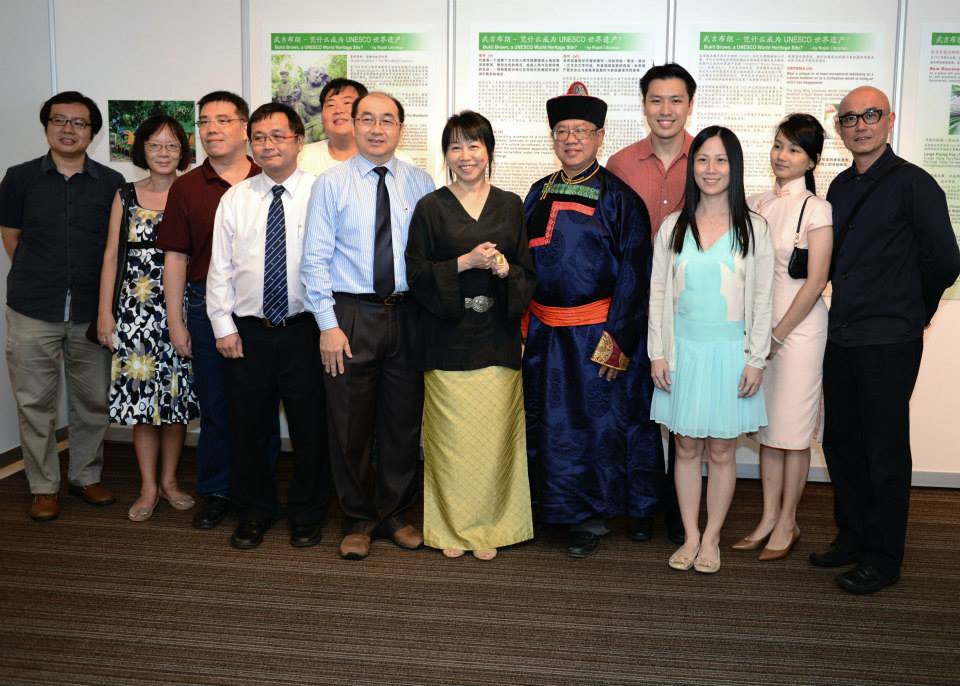

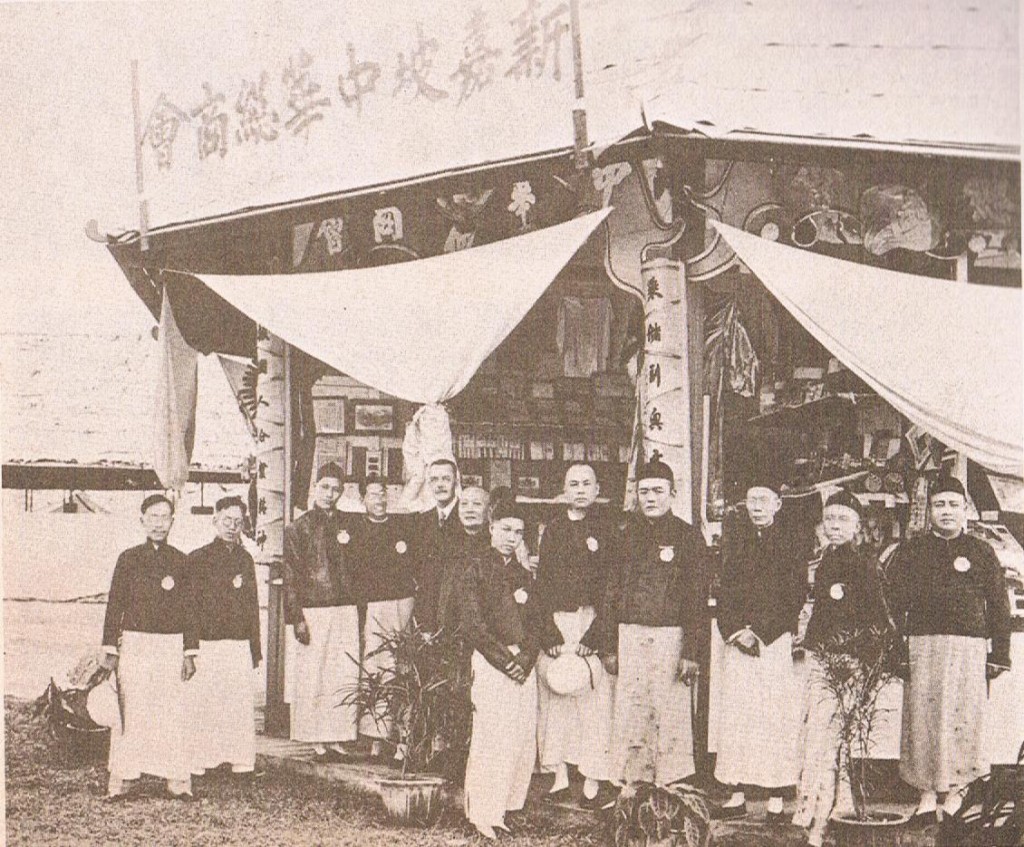
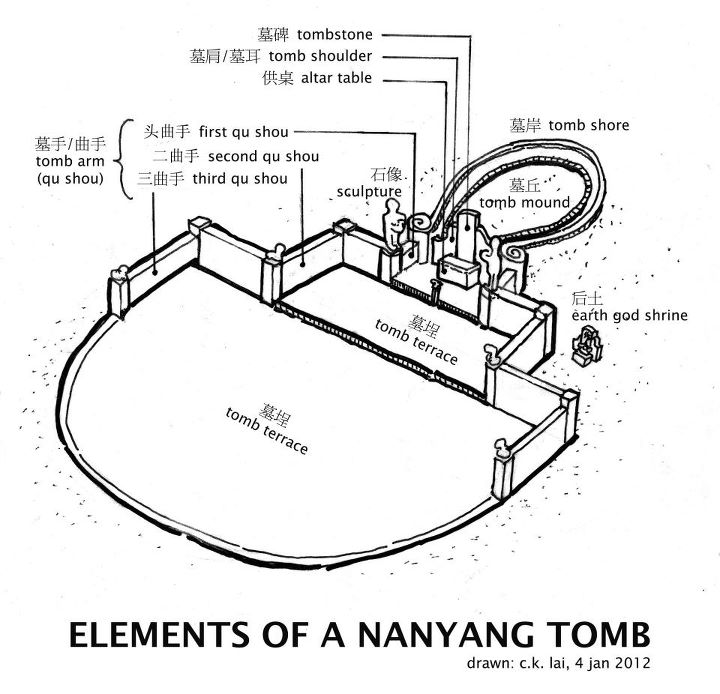
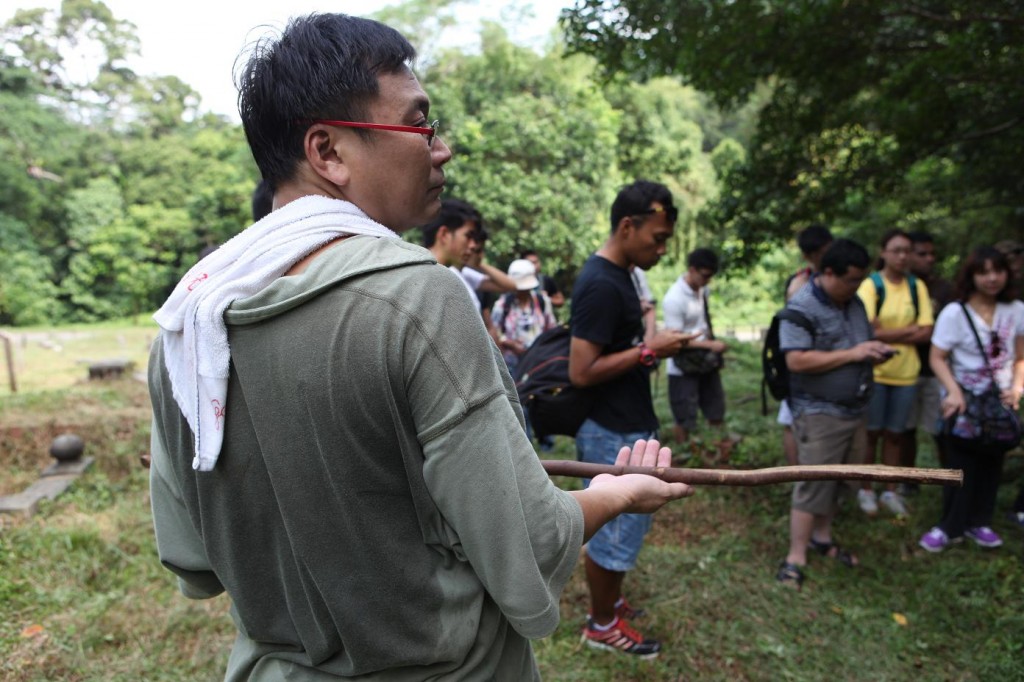


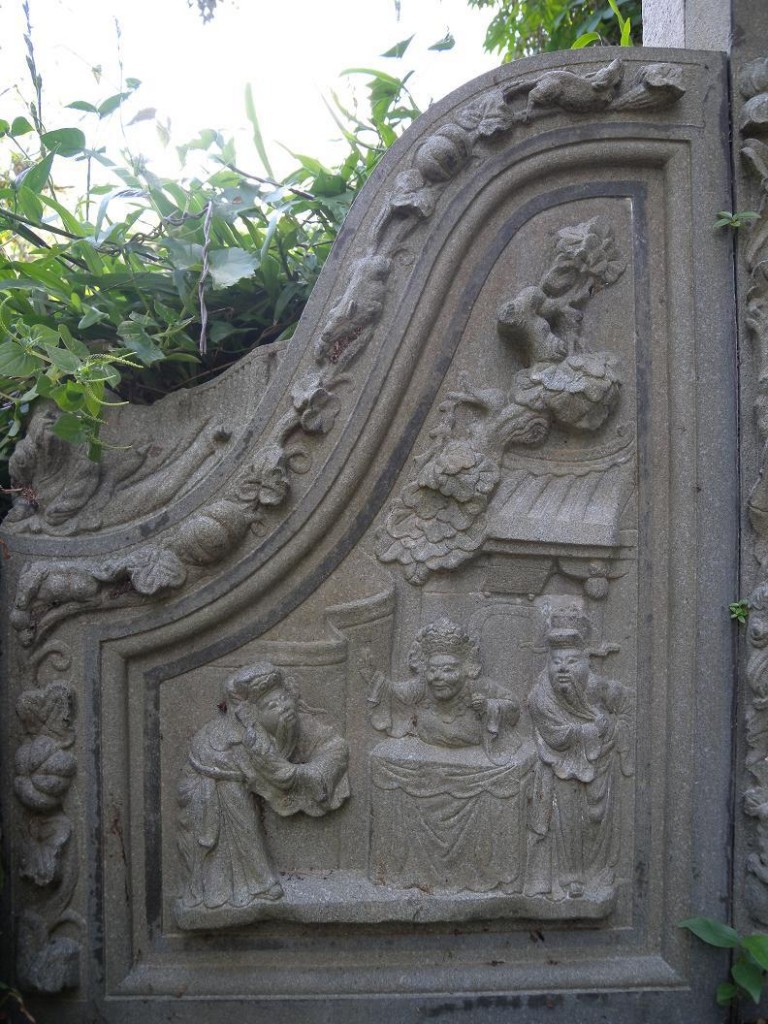
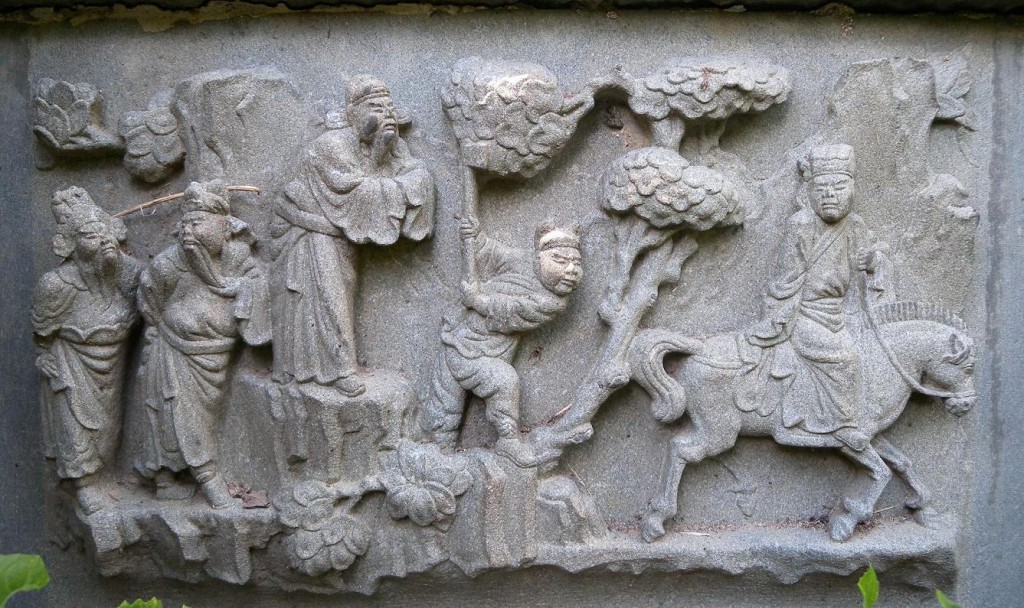
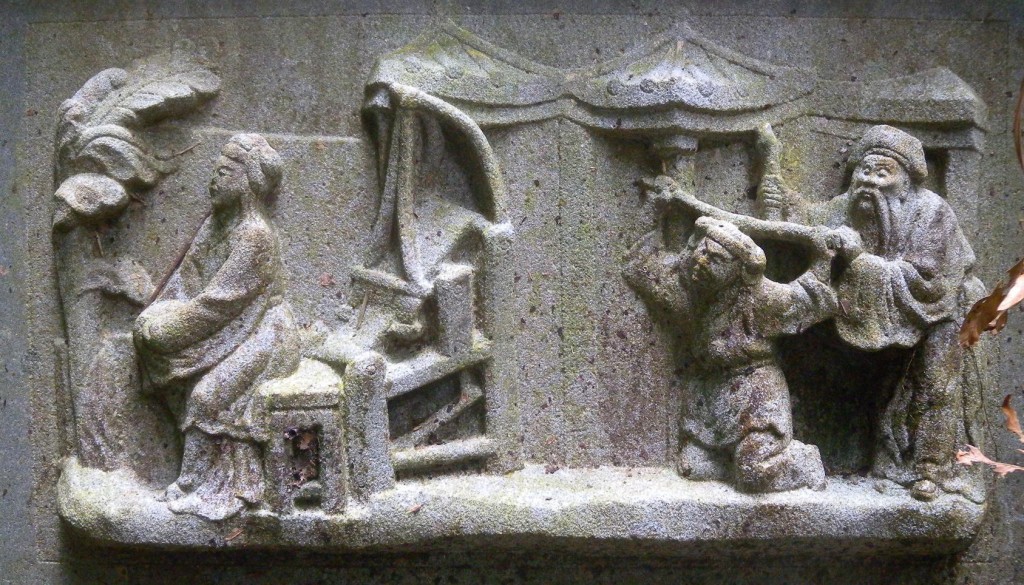
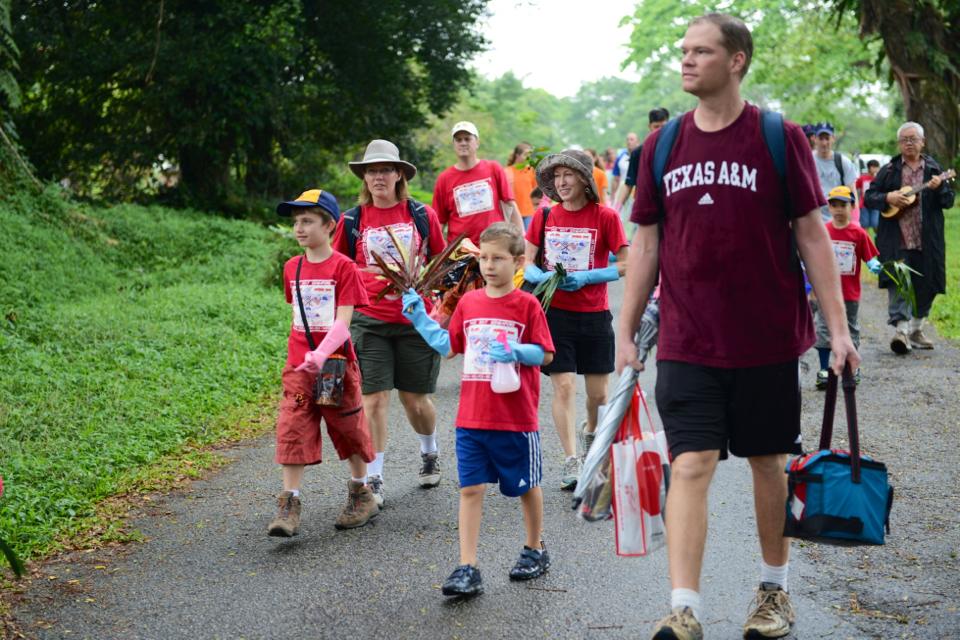
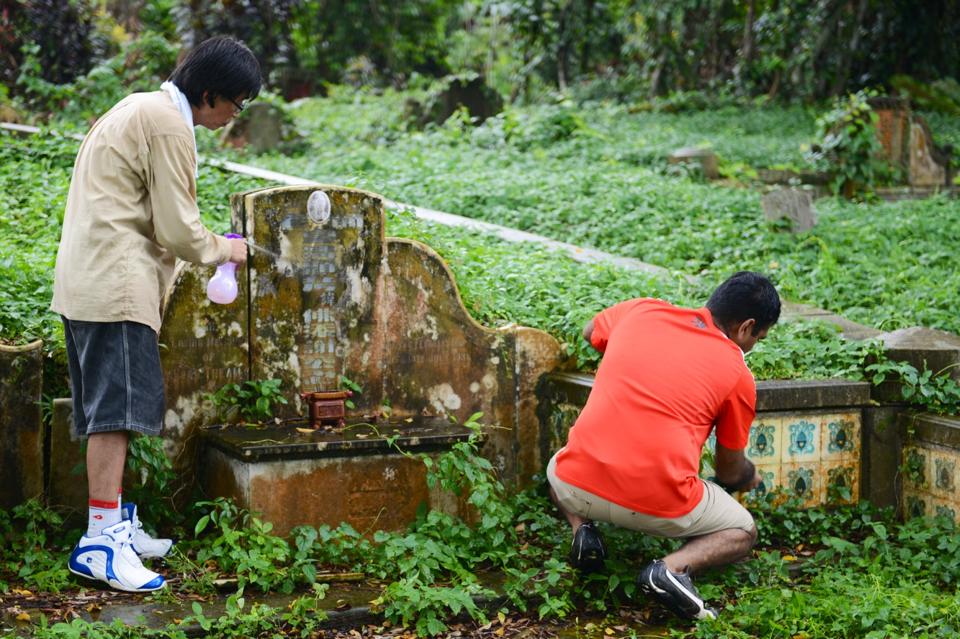

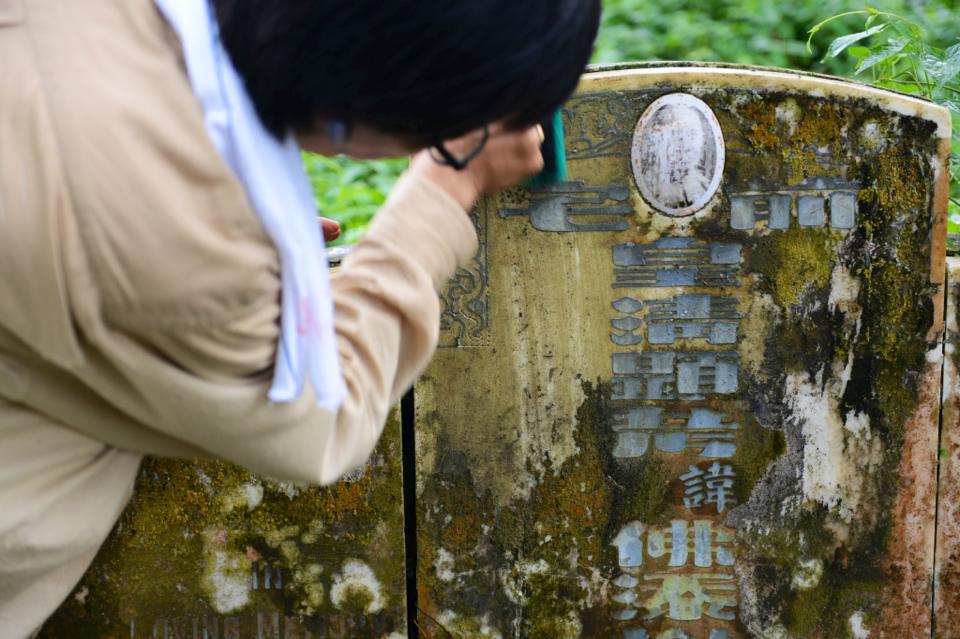
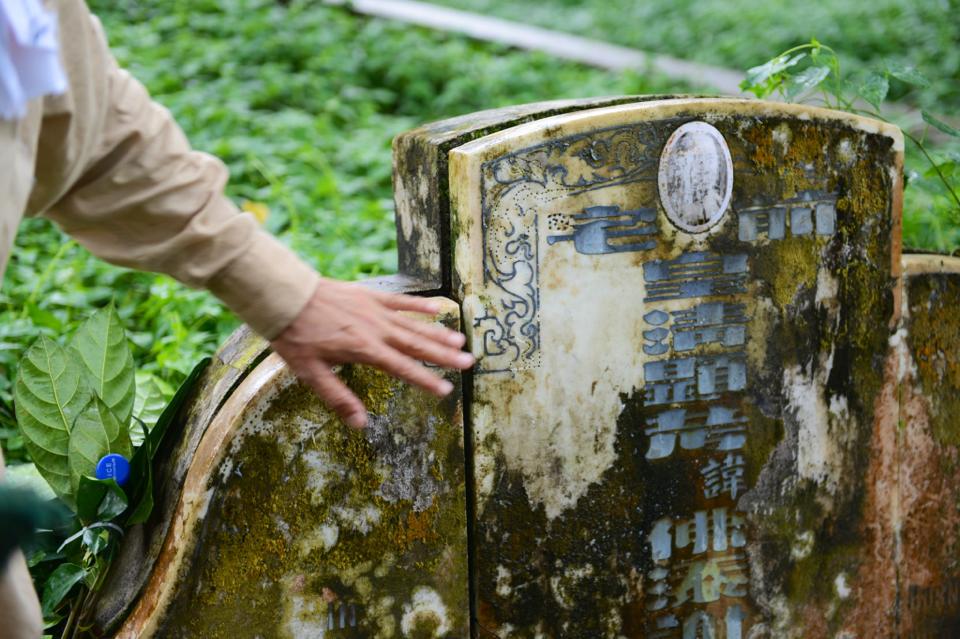
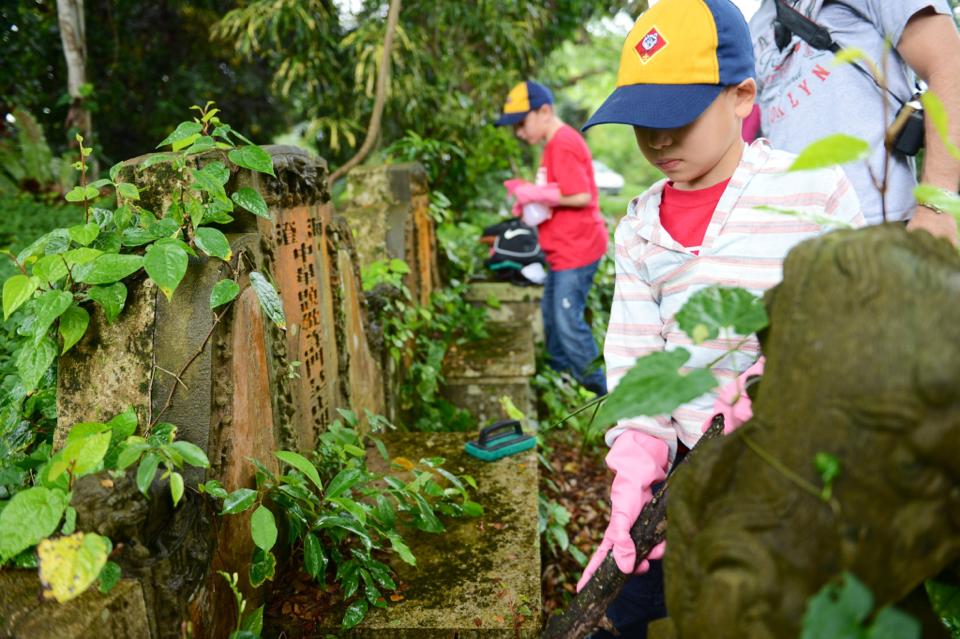
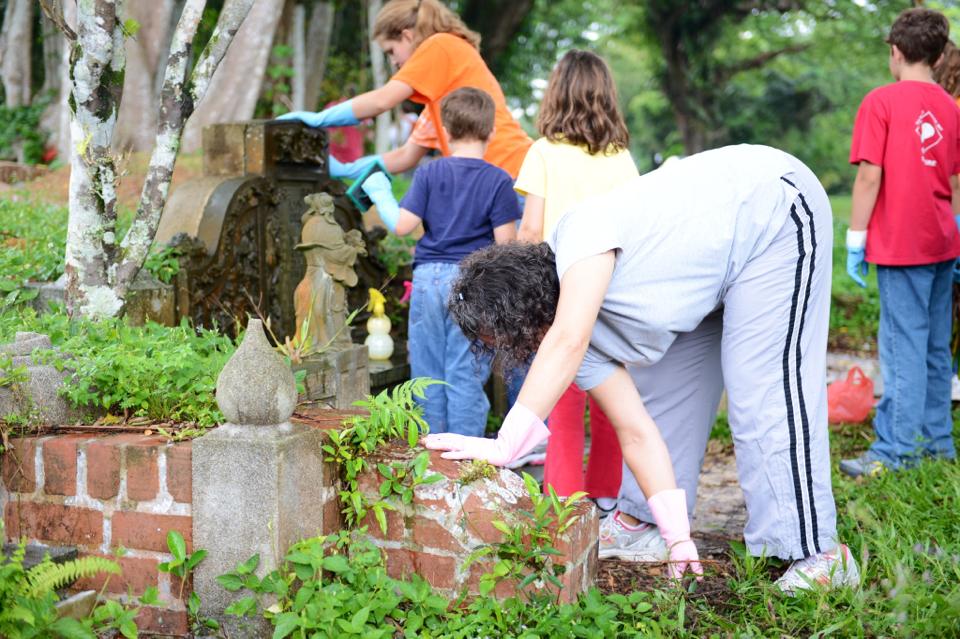
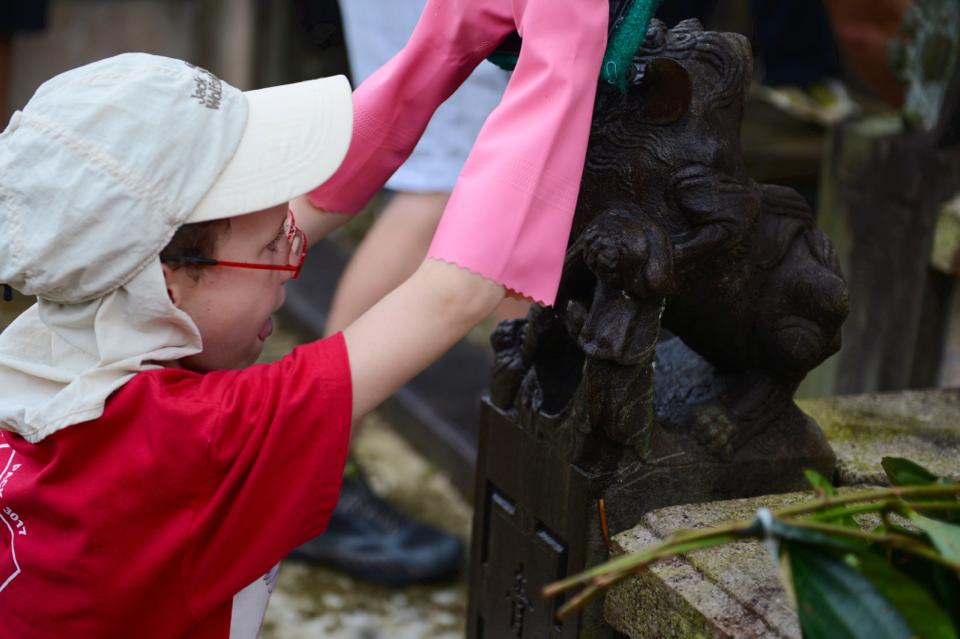
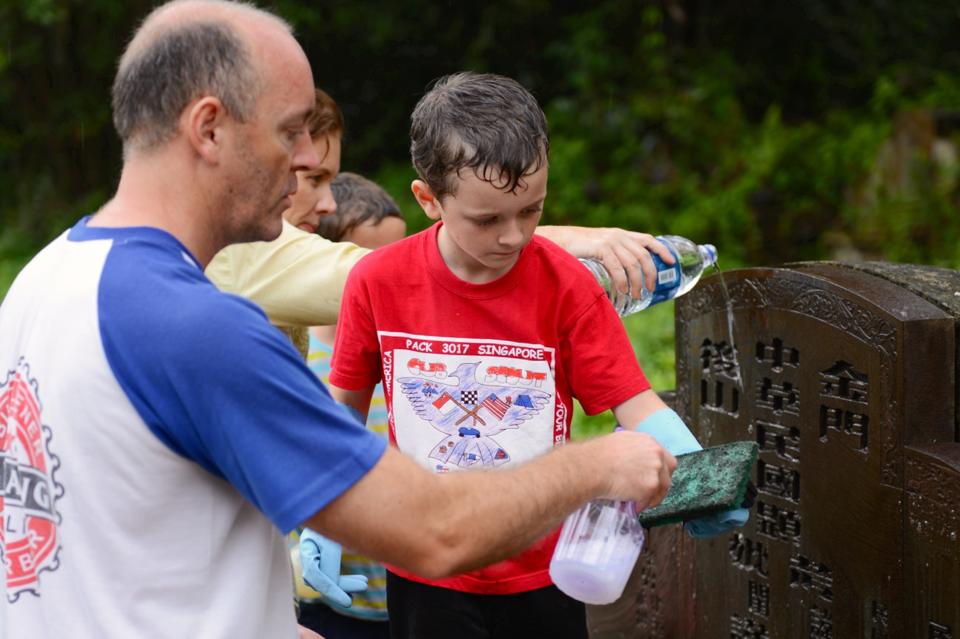
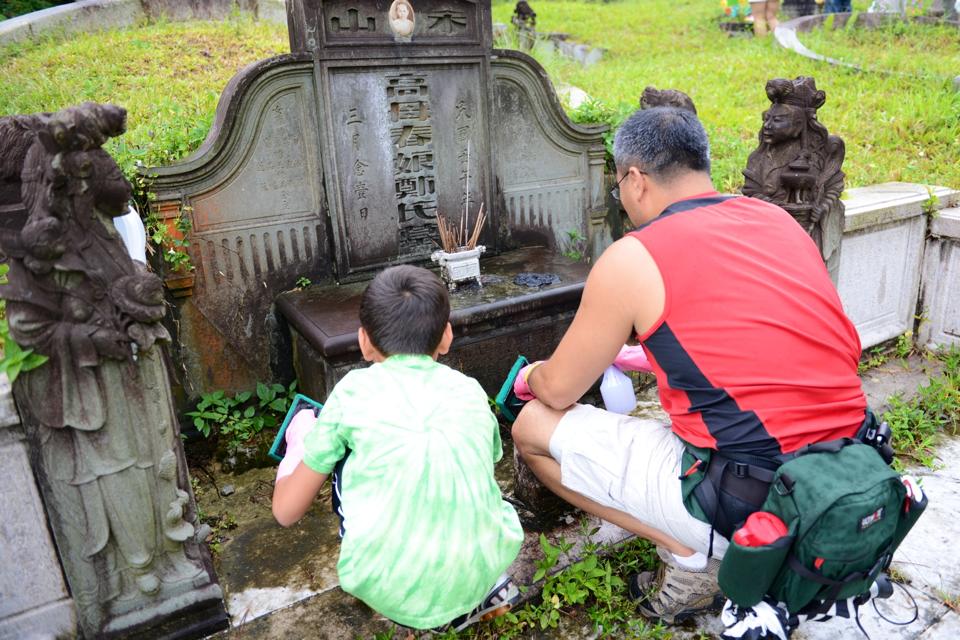



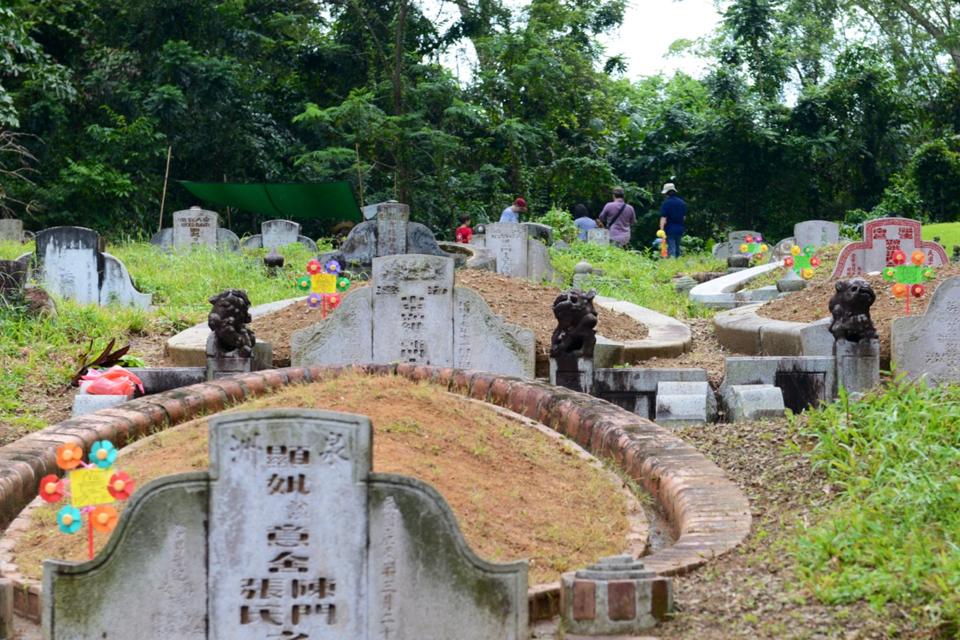
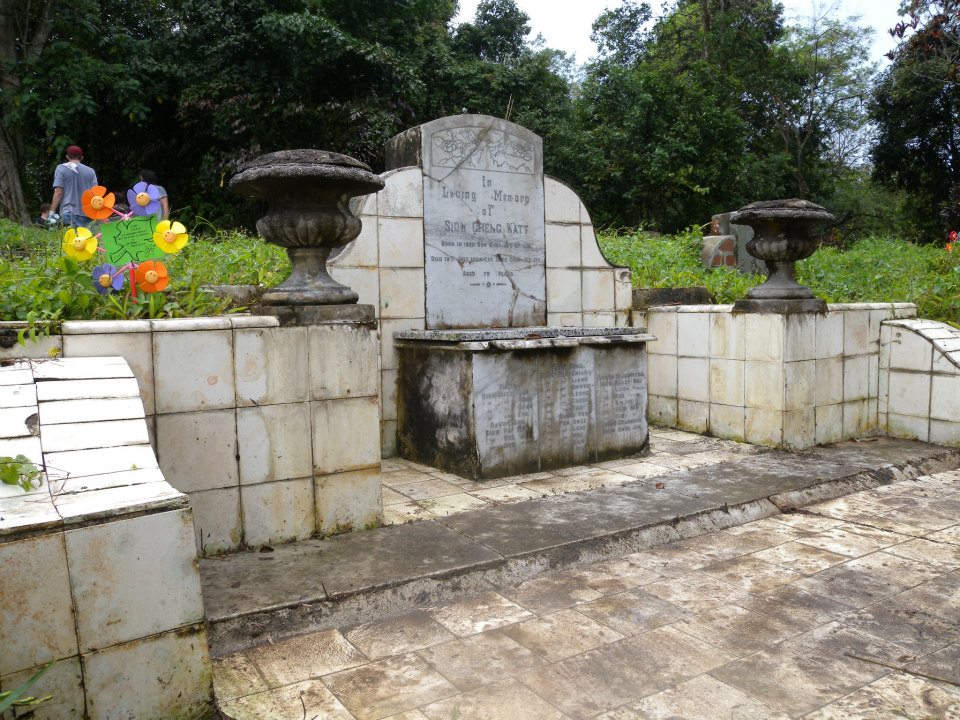
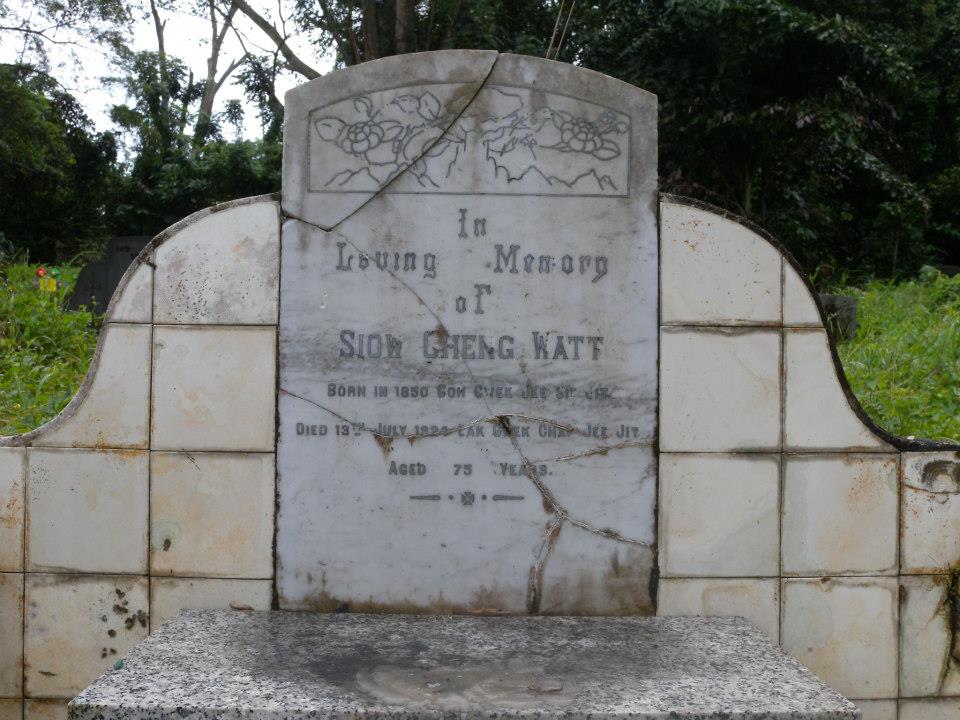
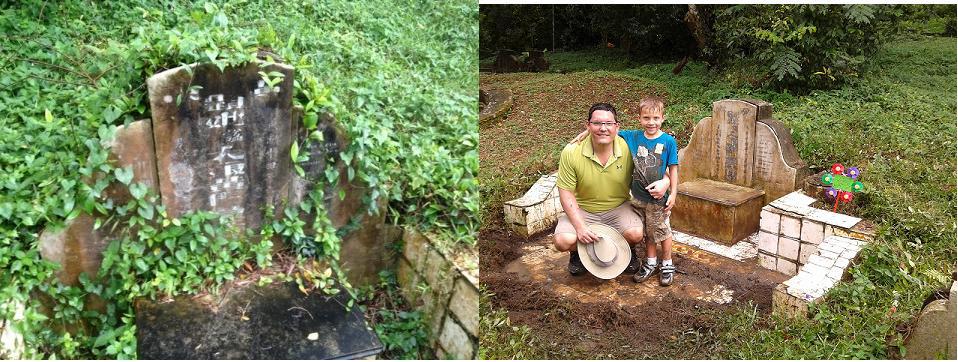
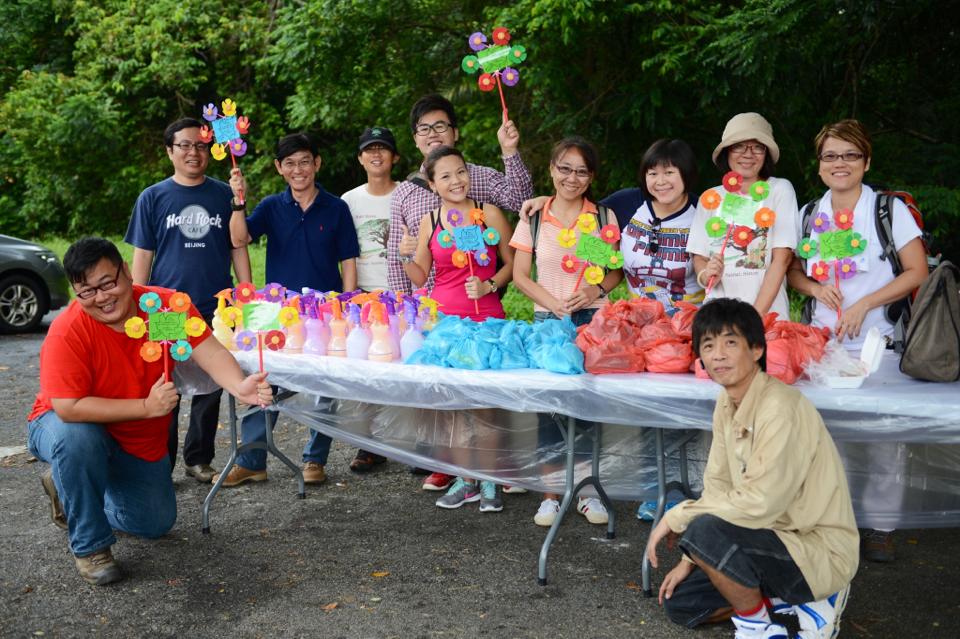
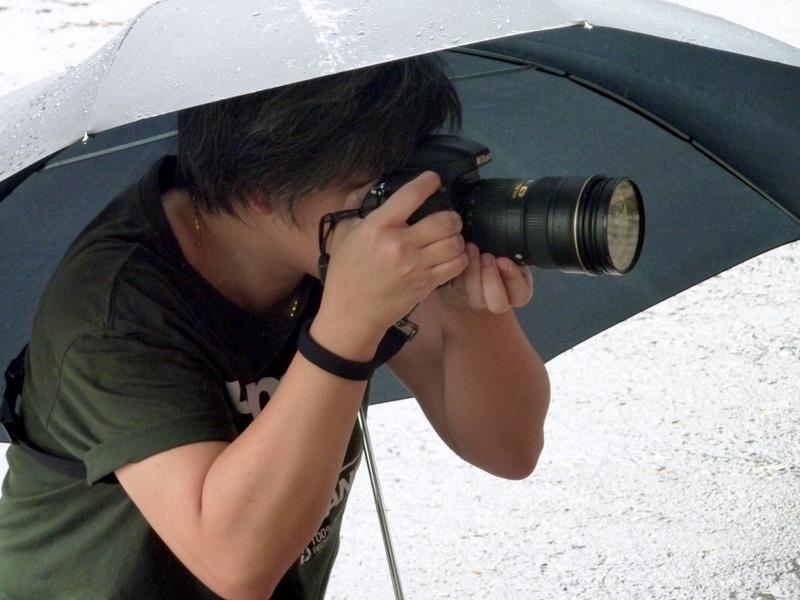
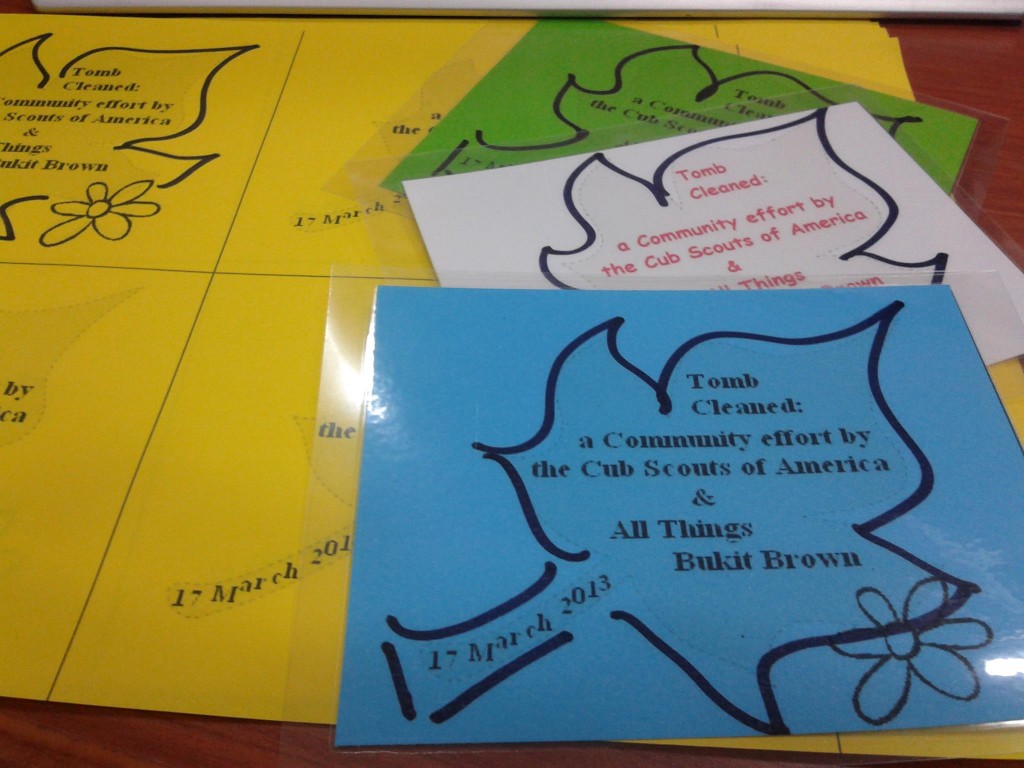
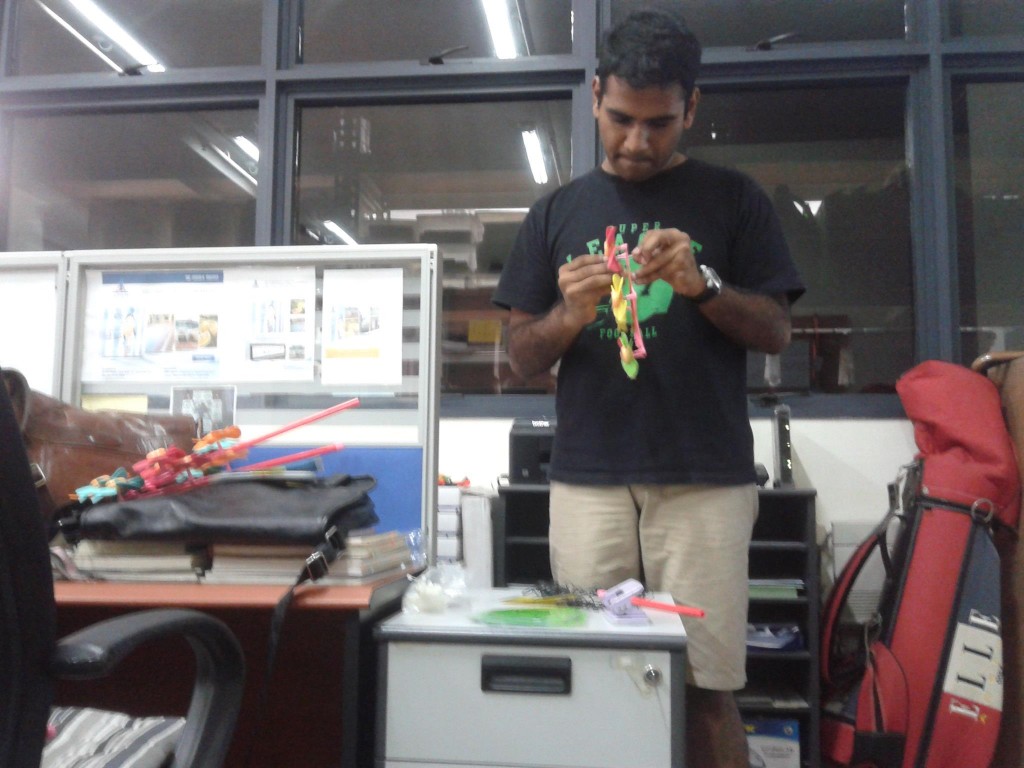



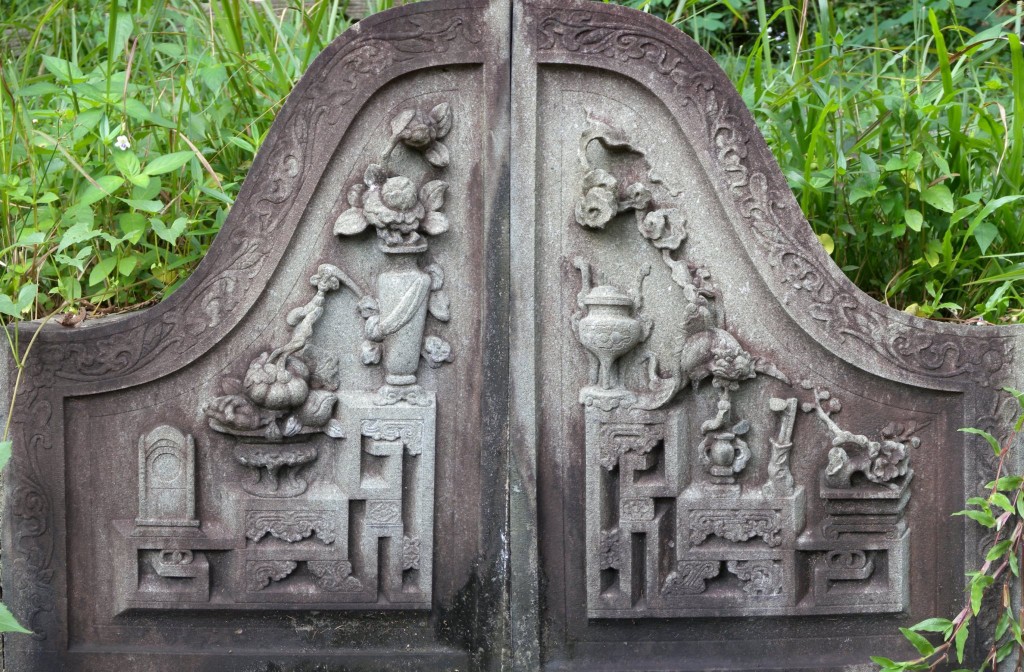
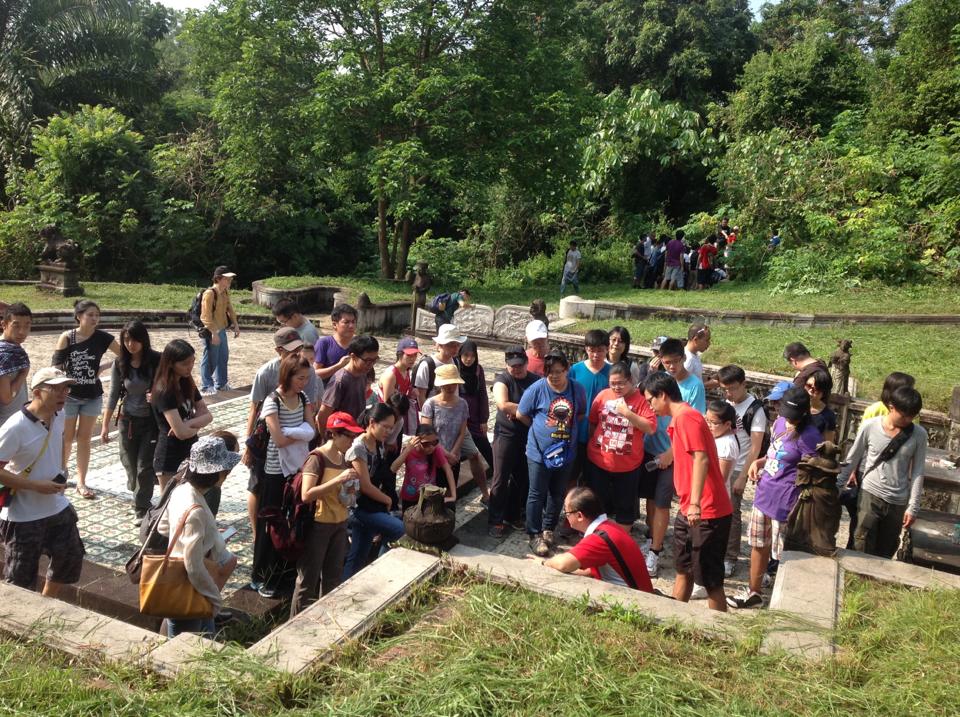
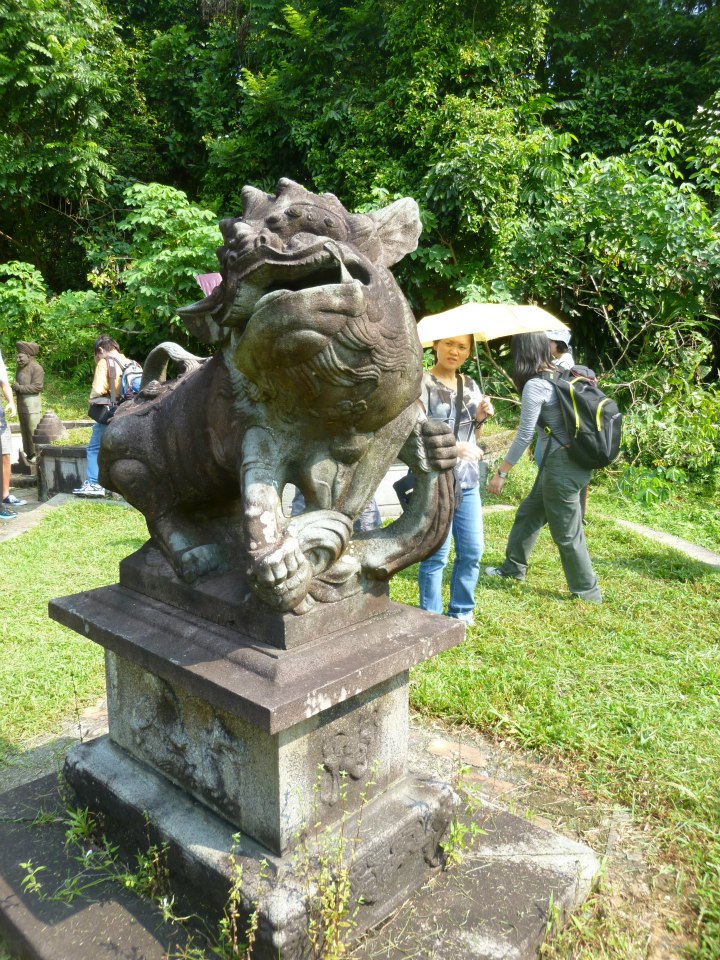


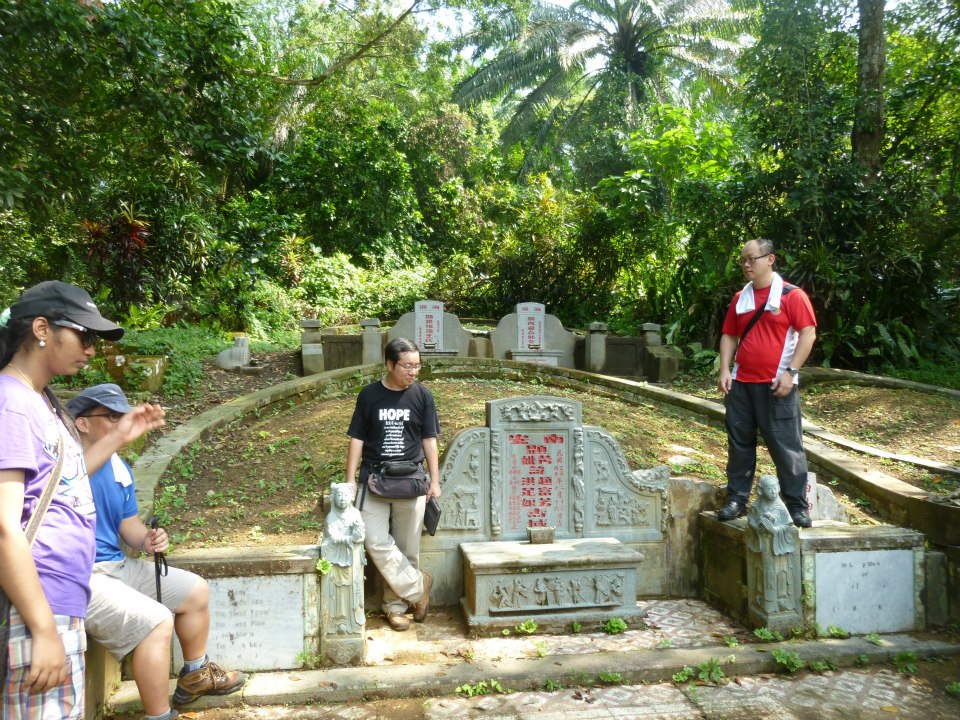
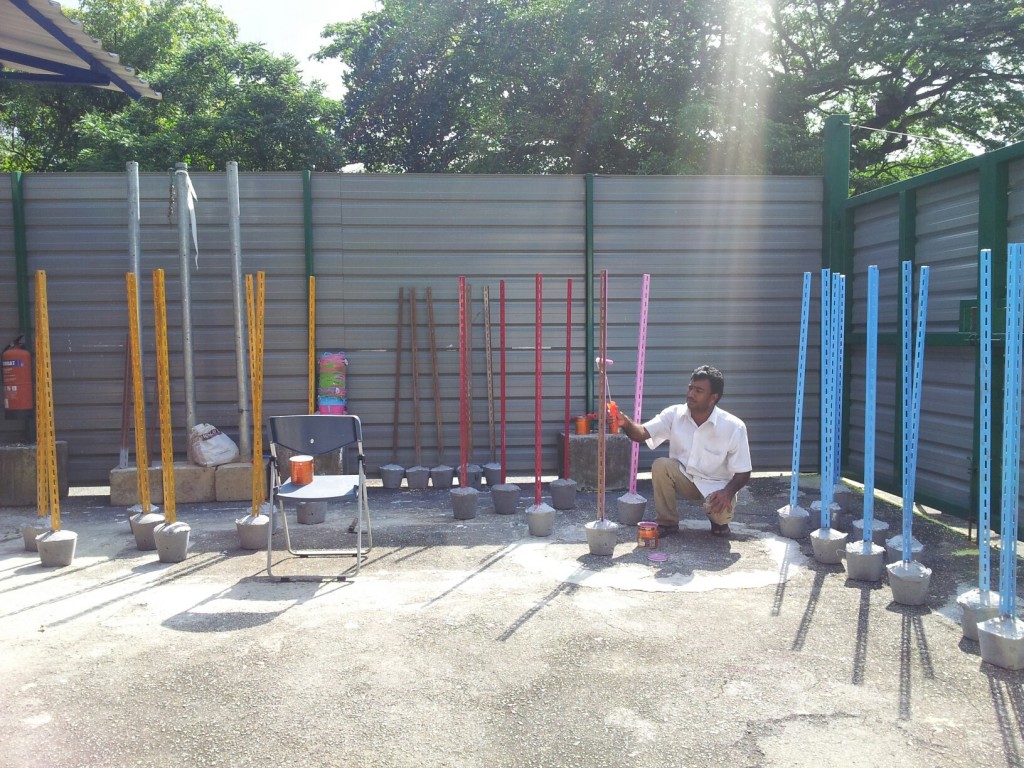
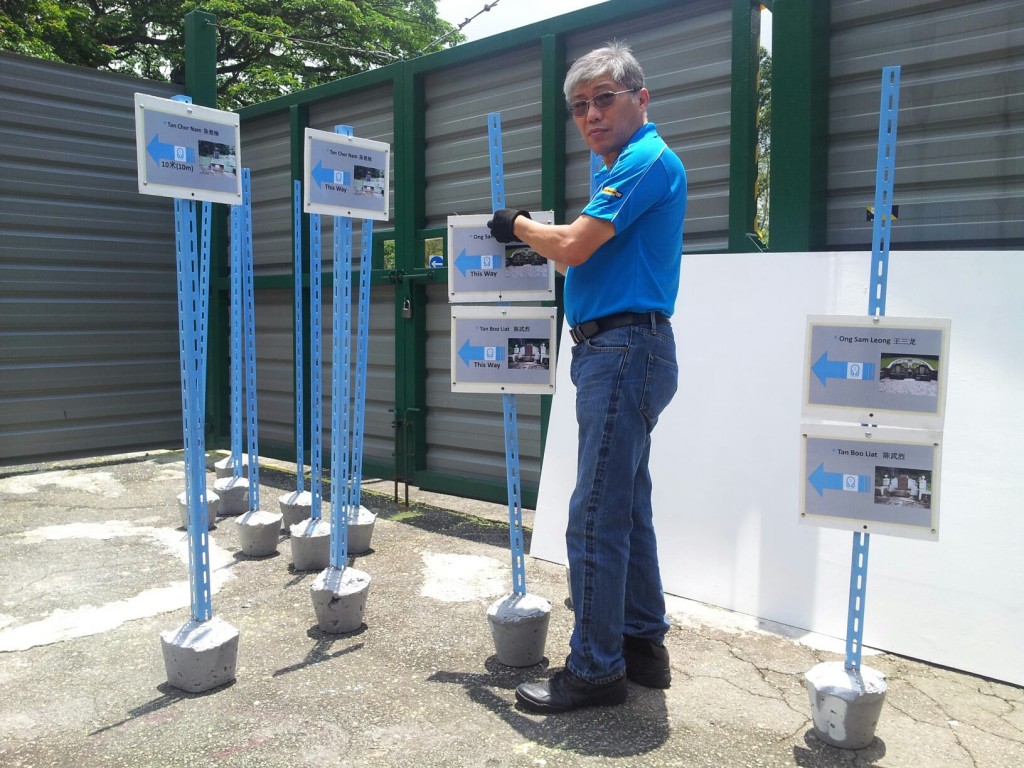
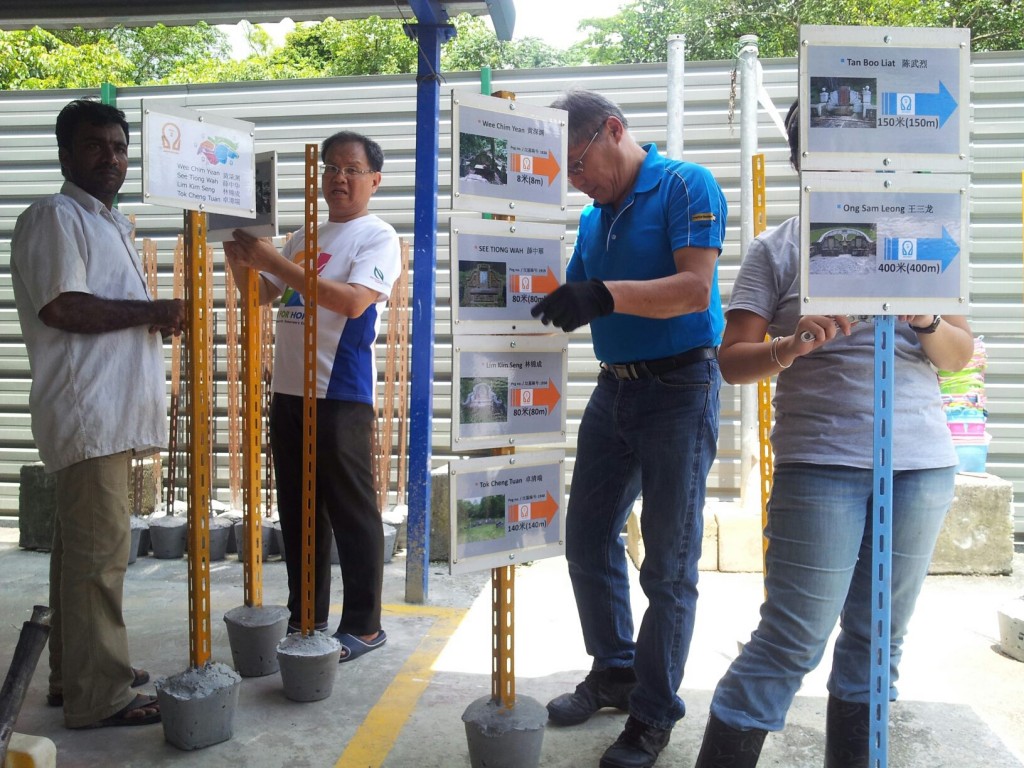
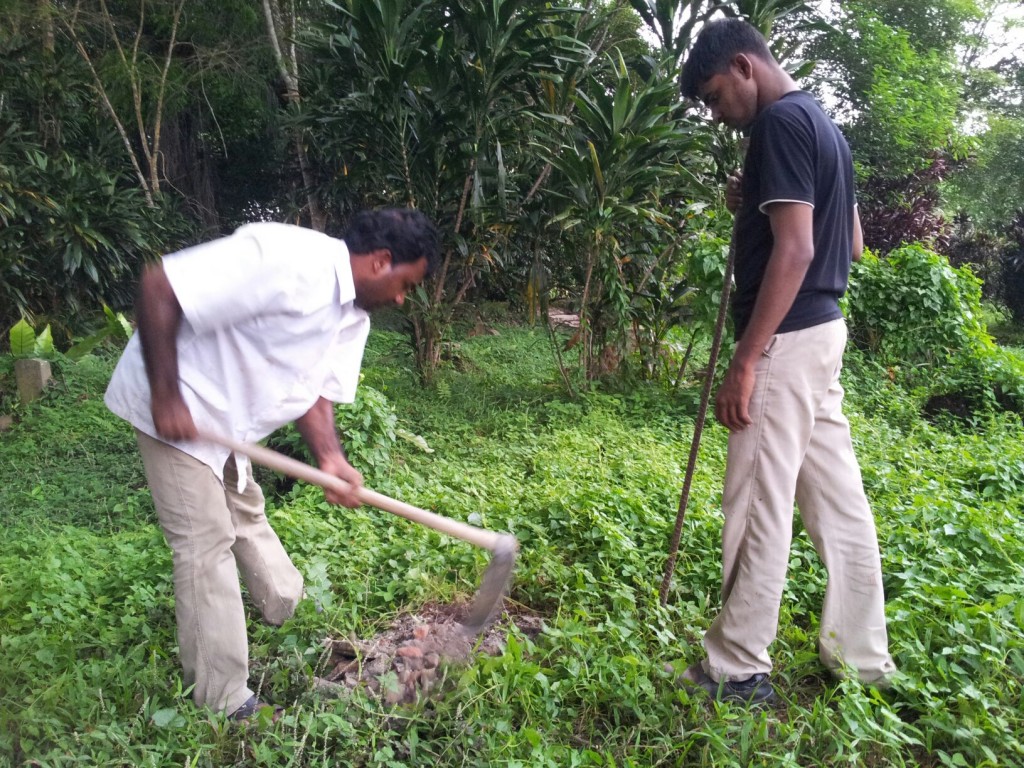
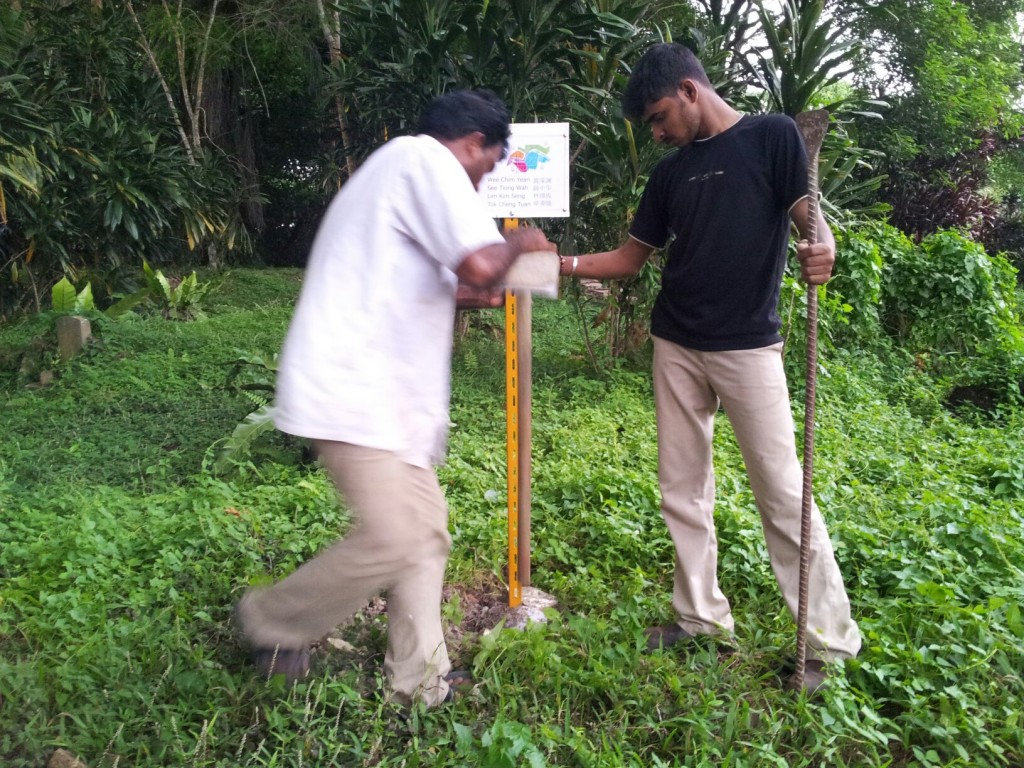

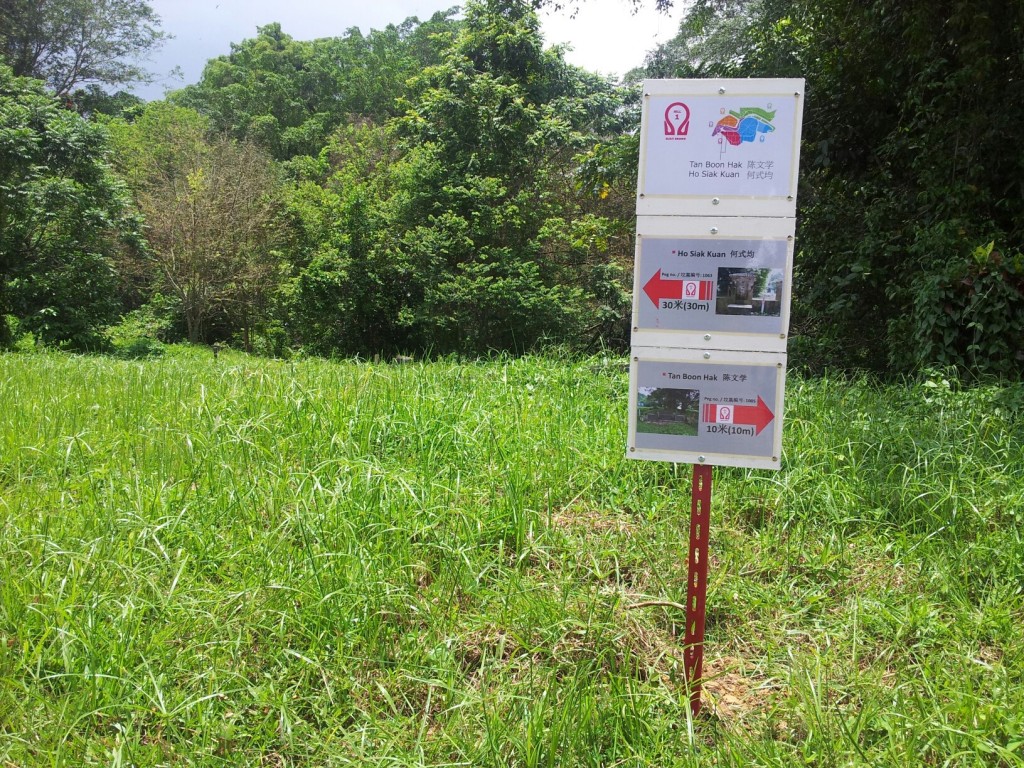

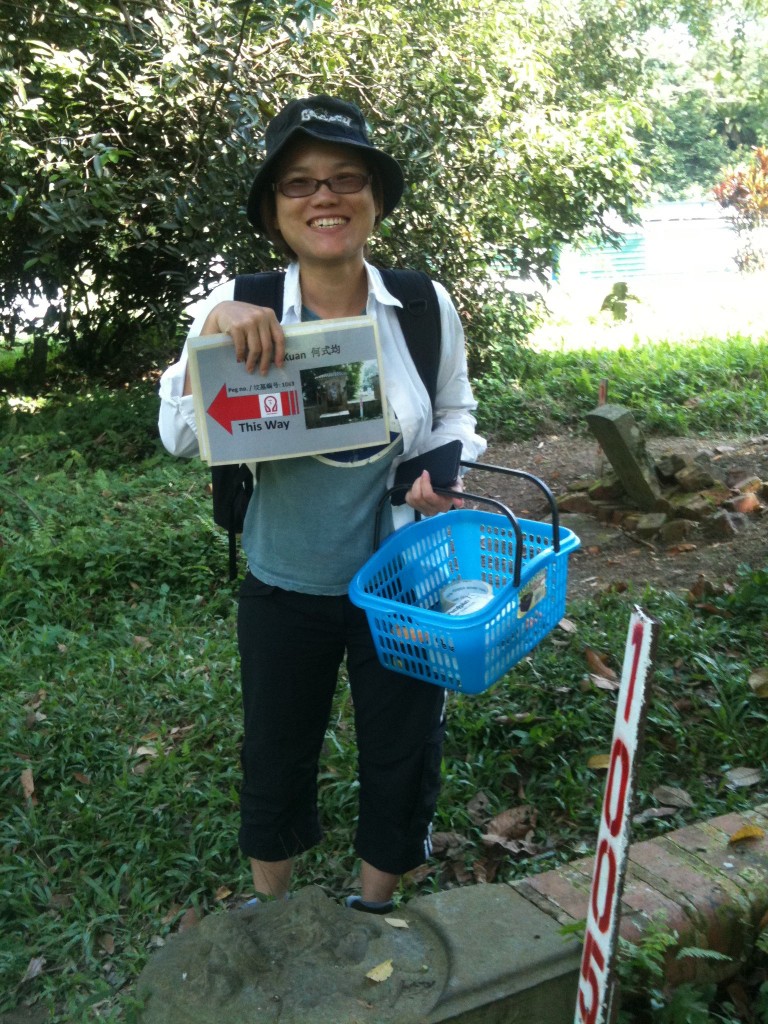
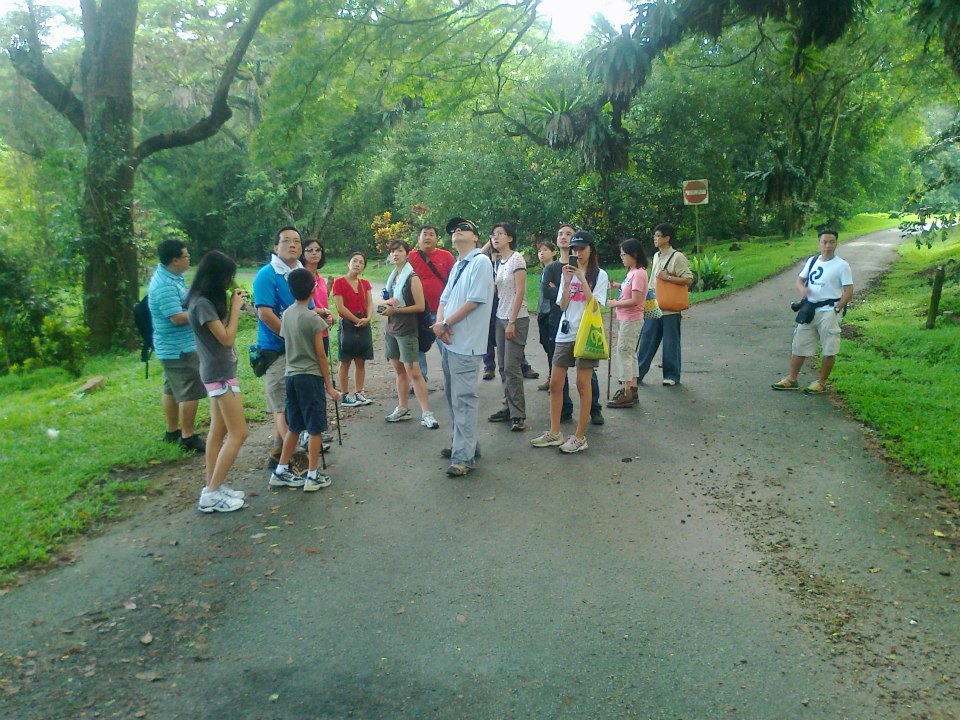
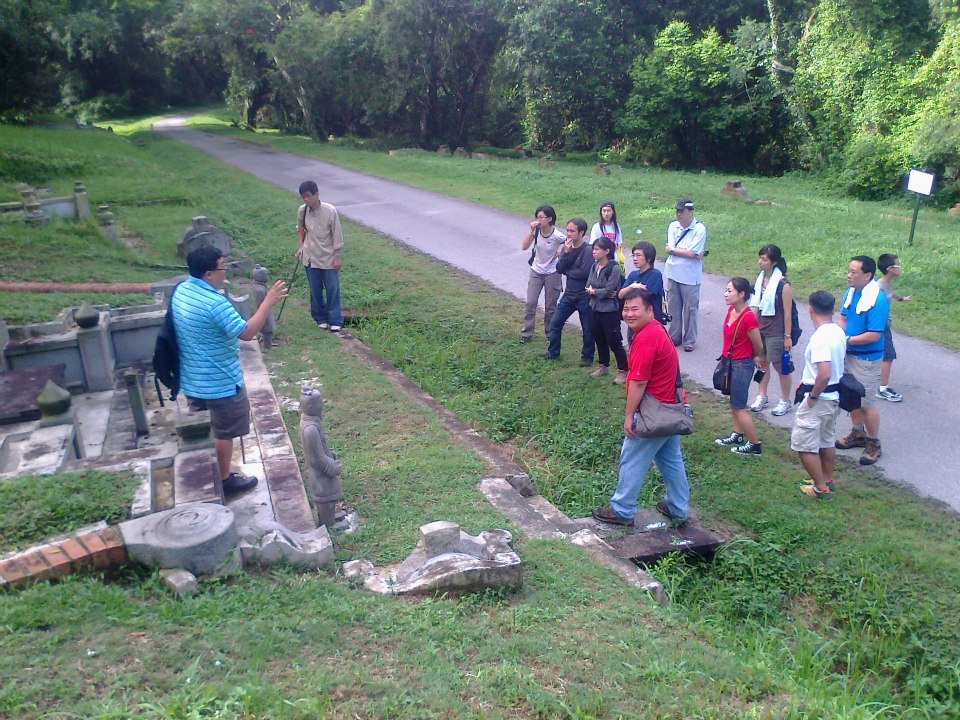
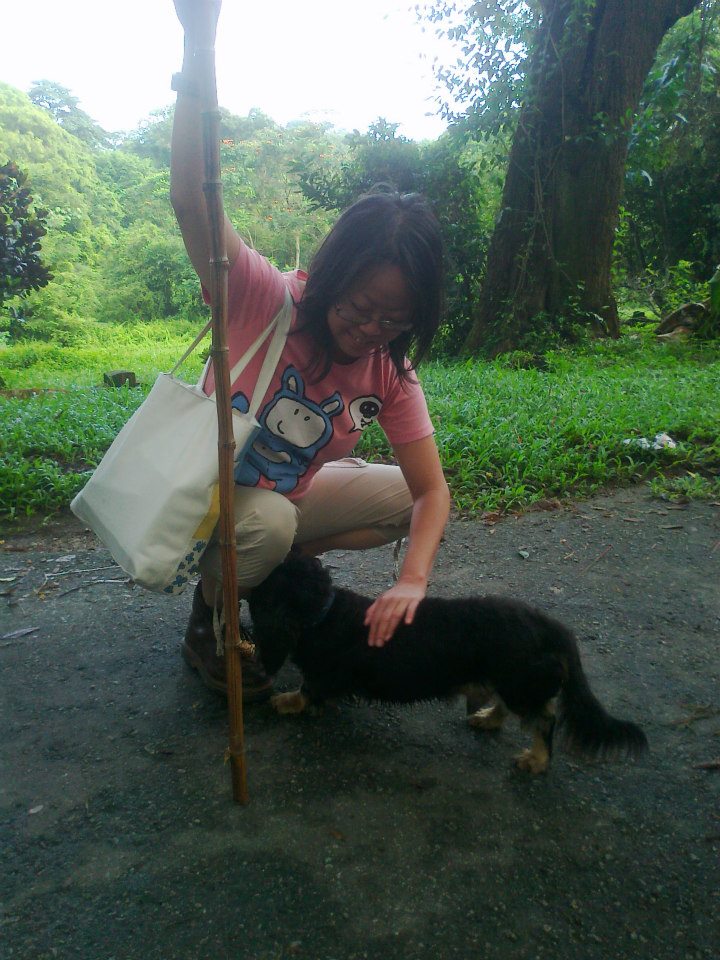
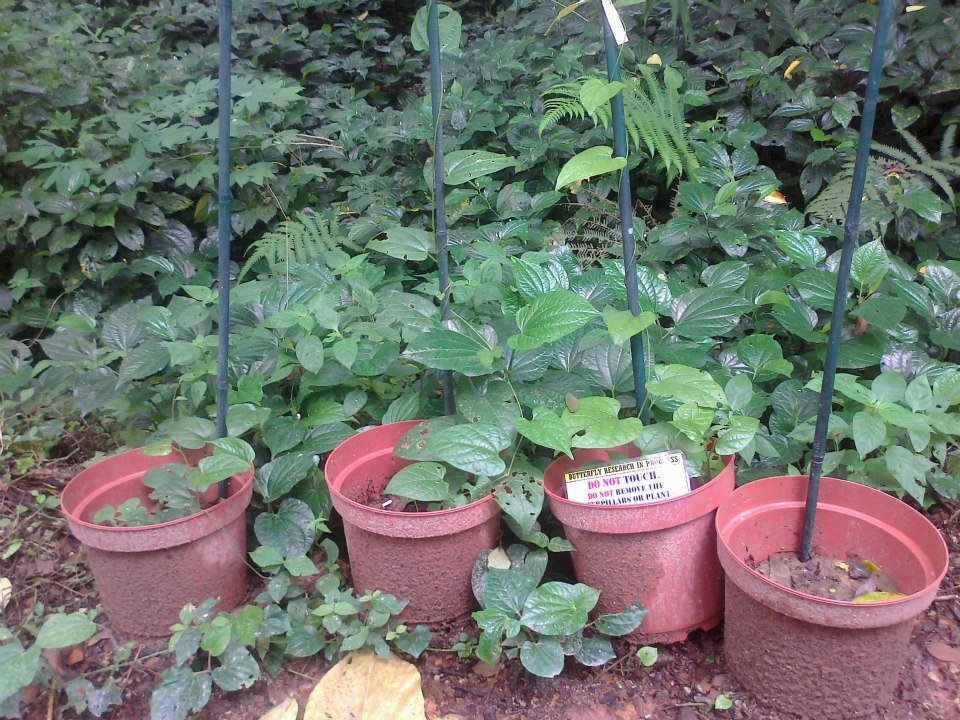
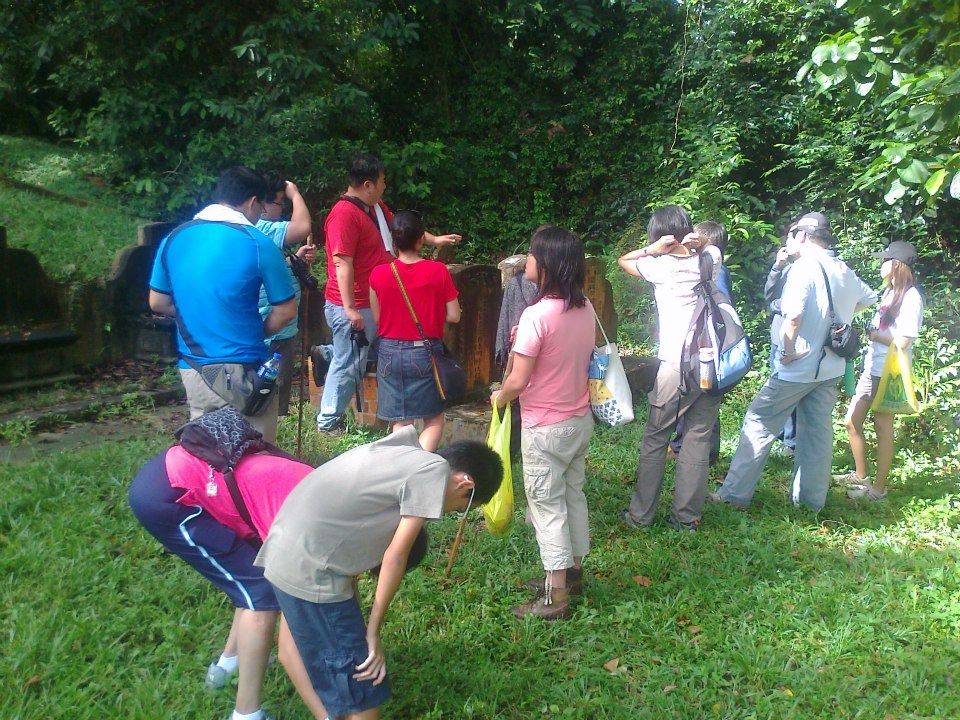
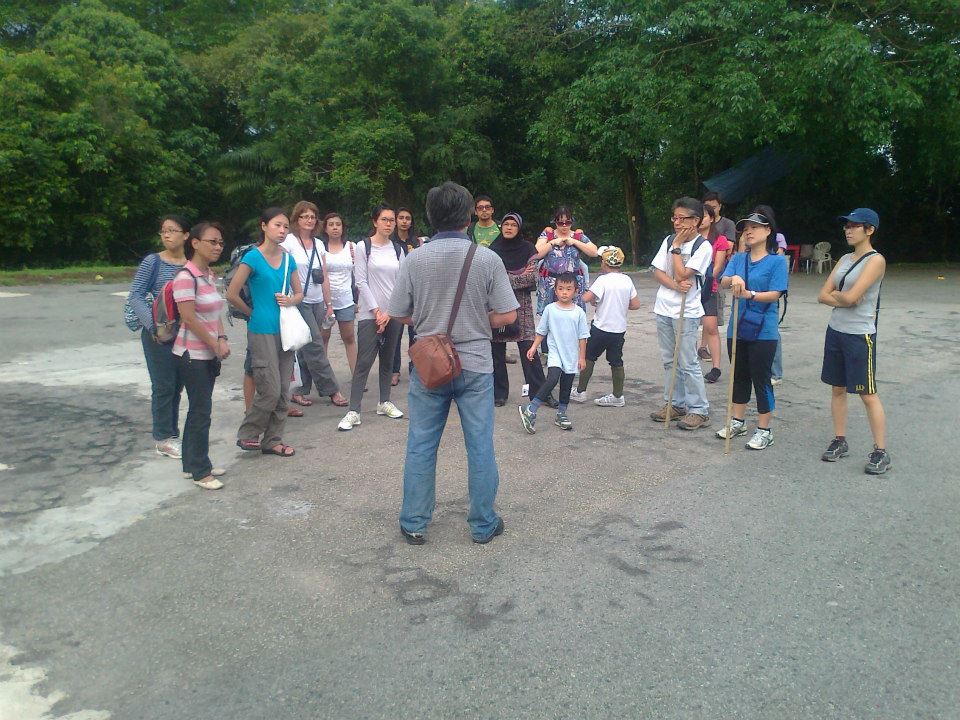
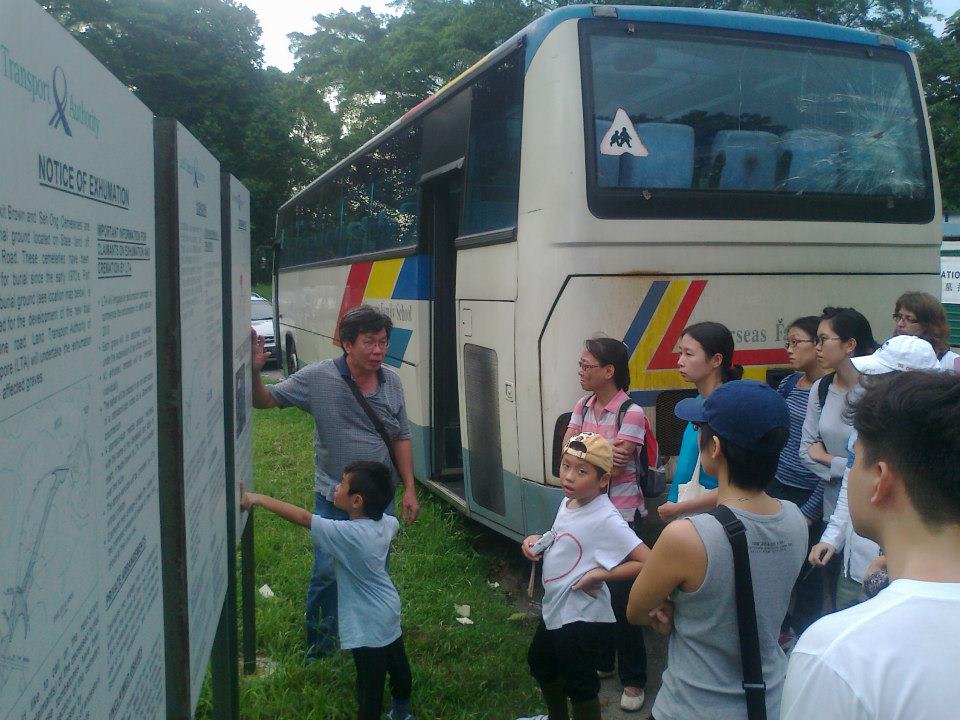
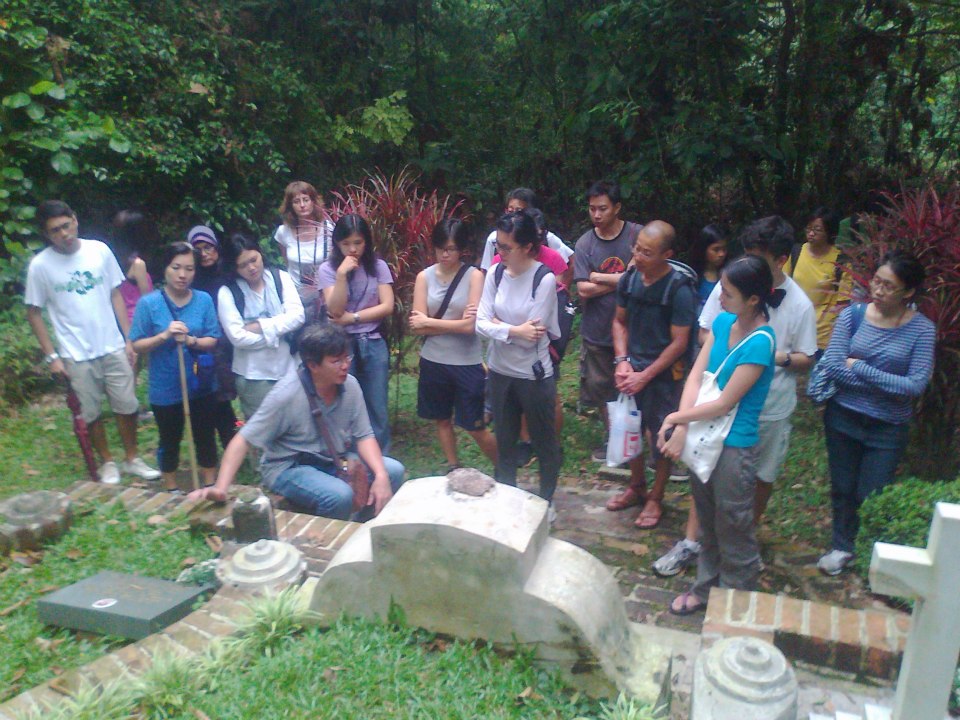

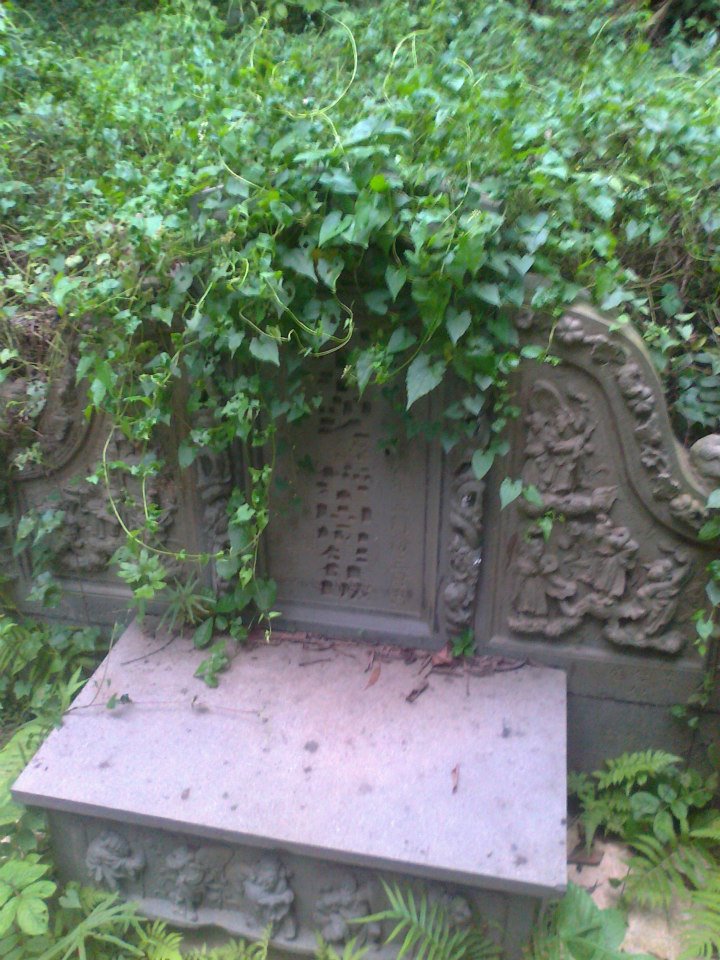
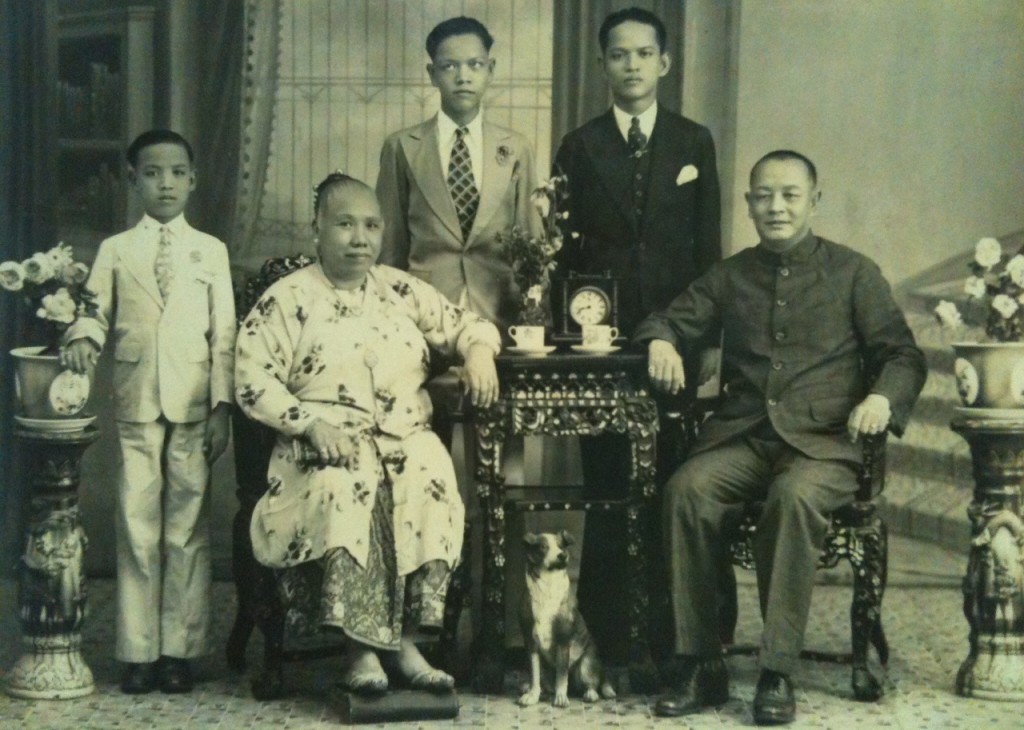
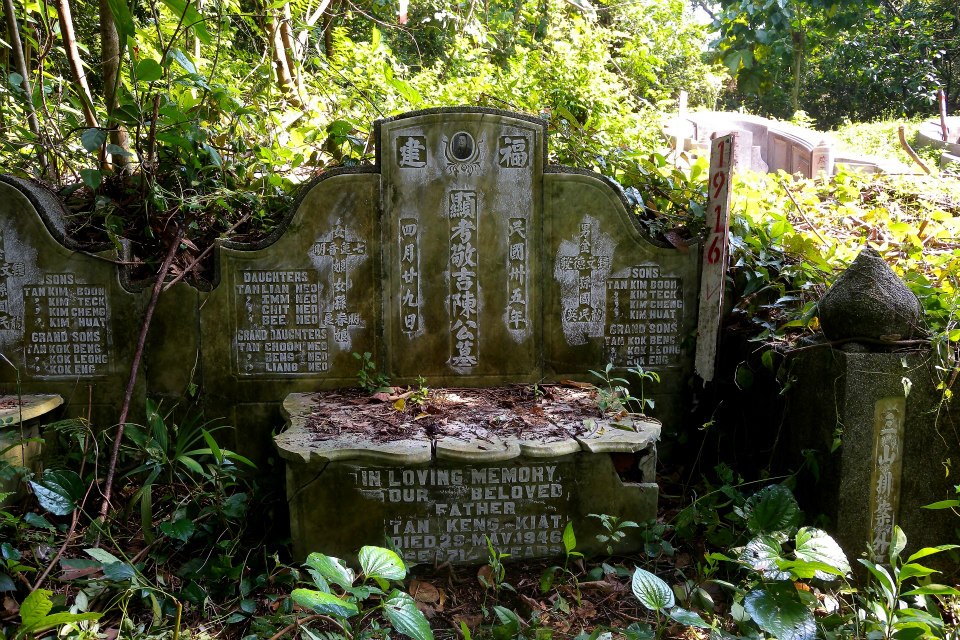
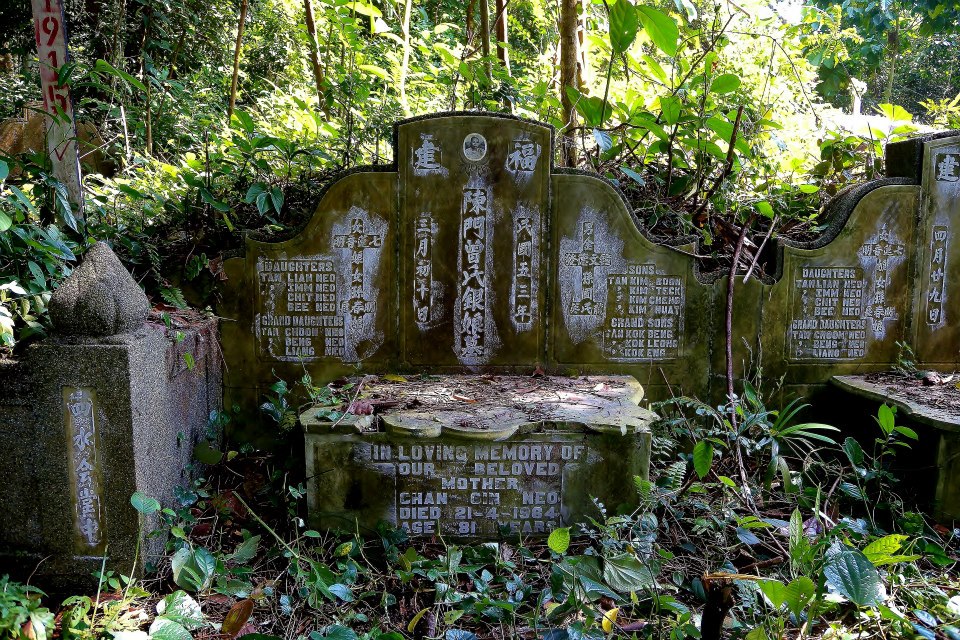
Recent Comments